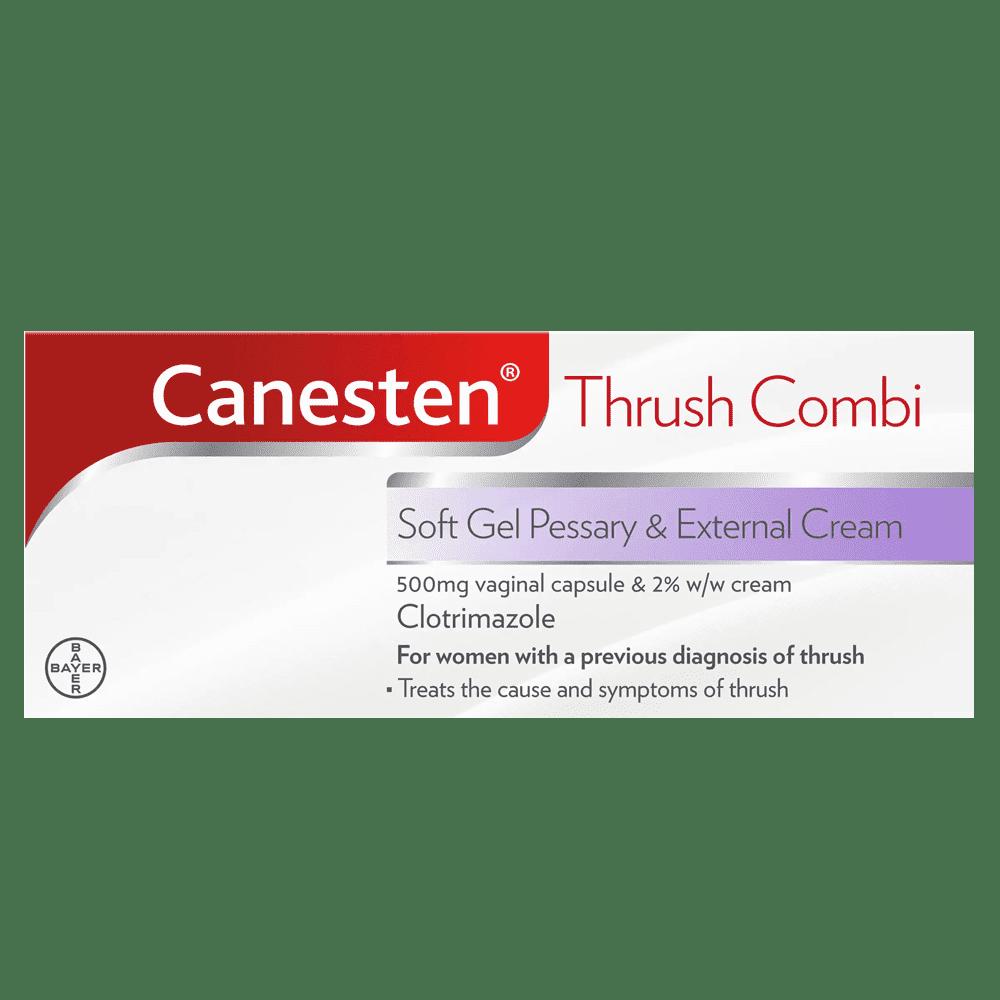Family Planning and Contraception Methods: Which One Is For You


Related products
Family Planning and Contraception Methods: Which One Is For You
Family planning and contraception methods enable couples to decide when to start a family, how many children they wish to have, and the spacing between births. Such decisions profoundly impact both individual lives as well as broader social welfare.
Contraception refers to the prevention of unwanted pregnancy. Various forms of birth control exist - ranging from natural methods such as fertility awareness-based techniques, through barrier methods like condoms (with varying condom effectiveness), hormonal types including oral contraceptives or 'the pill', intrauterine devices (IUDs), sterilisation procedures, emergency contraceptives etcetera.
Each contraception method has unique features in ease-of-use, cost-effectiveness, reliability for preventing pregnancy and potential side effects. A healthcare provider's guidance might be beneficial in choosing among different birth control options based on these considerations and an individual's health history and lifestyle factors.
The importance lies primarily in allowing people reproductive autonomy – that means being able to decide against having children altogether if one so desires -plus ensuring healthier pregnancies by offering ample time for recovery post-delivery, thereby reducing maternal mortality risks, among other benefits which include increased economic stability & improved child wellbeing due their parents' ability provide better care upon choosing smaller families thus improving the overall quality of life. Contraception methods are paramount in helping couples plan parenthood according to their financial capacity, mental preparedness and physical wellness.
Regarding oral contraceptives - one popular form of family planning method - they offer benefits beyond preventing pregnancy, such as reducing menstrual cramps, controlling the timings of periods or even treating certain types of acne. However, like all medications, it might carry some risks that warrant discussion with a healthcare provider before commencement.
Barrier forms such as condoms serve in contraception and display effectiveness against sexually transmitted infections, including HIV, by physically blocking sperm meeting an egg or transferring infectious agents respectively, thus enhancing sexual health outcomes alongside reproductive control functions inherent within contraceptive usage generally speaking.
Analysing birth control options requires consideration towards individual needs from multiple angles: medical history sensitivity aspects (for instance, allergies), lifestyle habits relating specifically towards each given product's use-case requirements (like remembering taking a pill daily versus having IUD implanted once every few years).
Purposeful family planning and contraception utilisation engender empowerment, especially for women who bear heavier costs associated with pregnancies biologically and socioeconomically, while enabling better population management measures, ultimately benefiting society through higher resource efficiency distribution & sustainability strategising efforts overall.
Remember though, appropriate advice regarding any health-related matter always comes from a trusted health provider. Health providers bring their expertise to guide individuals through the complex landscape of birth control options, helping them strike an optimal balance between effectiveness, convenience and potential side effects.
The link between family planning and society's welfare cannot be overstated because it pertains to poverty reduction and gender equality enhancement. With proper knowledge of contraception methods, including oral contraceptives or barrier forms like condoms (keeping in mind varying condom effectiveness), one gains autonomy over reproductive choices leading to more fulfilling life trajectories while contributing positively towards broader societal developments by alleviating resource strain challenges globally pervasive.
1.Withdrawal (coitus interruptus)
Withdrawal, commonly known as coitus interruptus or "pull-out" method, involves the male partner withdrawing his penis from the woman's vagina and away from her external genitals before he ejaculates. It is a strategy intended to prevent sperm from reaching an egg, thereby averting conception.
The procedure of use seems straightforward but primarily depends on the man's self-knowledge plus control abilities regarding ejaculation timing – which might indeed prove more difficult than it initially appears since proficiency in such discipline without any spillage requires substantial technique mastery over time. Some sex education sources suggest men first practice this during masturbation to better gauge their physical responses associated with impending climax reactions.
As for its effectiveness timeline - unlike other contraceptive methods that offer protection over longer durations (like monthly injections), withdrawal needs application every single instance of sexual intercourse, thus necessitating consistent diligence exhibited by all individuals involved at every encounter.
On the one hand, cost doesn't pose a significant concern given its nature being essentially free-of-charge, lacking the necessity of procuring special devices/medication, potentially making this quite accessible across different socioeconomic classes globally, notwithstanding cultural acceptability aspects playing a crucial role in influencing overall uptake rates within various communities worldwide too nevertheless.
However, it's worth noting two major downsides: Firstly, there exists risk-related pre-ejaculation fluid containing some sperm that leads to pregnancy. Secondly, this method does not protect against sexually transmitted infections.
It is estimated that with perfect use - meaning every time withdrawal occurs exactly as intended -about 4% of couples relying on this technique might experience an unintended pregnancy over a year. However, typical usage rates (which account for human error) indicate around a 22% failure rate or, in other words, approximately one in five women utilising withdrawal reportedly get pregnant annually based on statistics available from relevant research studies conducted thus far.
Advantages primarily centre upon lack of financial cost involved coupled with convenience given the absence of requirement possessing any specific materials beforehand, unlike many alternative contraceptive options necessitating procurement of health products varying degrees albeit natural methods do exist such fertility awareness-based types nevertheless requiring learning plus adherence to certain protocols though instead.
Yet drawbacks certainly include higher risk comparison most medically endorsed birth control measures due to potential unreliability factors, particularly men's self-control abilities about ejaculation timing alongside STI exposure vulnerability since it offers zero safeguards relative to sexual disease transmission prevention compared barrier techniques like condoms protecting both partners by physically separating direct contact henceforth ensuring better overall health safety results attained during intercourse generally speaking therein after all considered aspects contextually together finally from now on indeed essentially ultimately conclusively firmly definitively absolutely irrefutably undeniably unquestionably thoroughly comprehensively. Furthermore, it constantly pressures and stresses the male partners to exercise high self-control in every sexual encounter.
Moreover, it is important to note that withdrawal does not prevent the spread of Sexually Transmitted Infections (STIs) because there is contact between genitals before ejaculation. It might lead to dissatisfaction for both partners if the intercourse is interrupted abruptly.
Contrary to popular belief – pre-ejaculate fluid or 'pre-cum' that appears before full ejaculation perhaps contains sperm, thereby risking pregnancy despite successful execution interruption efforts at the climax stage during copulation acts.
While coitus interruptus holds longstanding historical usage across various cultures globally due its innate accessibility & convenience elements inherently imbued within practice itself-, serious contemplation requires weighing up pros versus cons meticulously prior any decision-making related adoption as contraceptive choice given relatively lower effectiveness rates compared numerous other modern birth control methods readily obtainable today such pills/vaginal rings/injections/IUDs/implants alongside barrier types expressly including condoms specifically designed tackling dual objectives targeting simultaneously unwanted pregnancy prevention plus protection provision against sexually transmitted diseases.
Despite its non-cost factor and convenience, the efficacy of withdrawal methods under real-world conditions is significantly low. Intervention from trained healthcare professionals enhances knowledge about more reliable methods of contraception, urging couples not to depend solely on the withdrawal method for pregnancy prevention.
Furthermore, it's essential to have open and honest discussions between partners about birth control preferences, as cooperation and mutual understanding play pivotal roles in effective use.
2. Calendar method or rhythm method
The Calendar or rhythm method represents a natural way of anticipating fertile windows within menstrual cycles. By keeping track of the lengths of multiple cycles, individuals predict when ovulation might occur – typically around the midpoint of each menstruation interval.
To utilise this approach, first, an individual must meticulously record cycle durations for at least 6-12 months to establish a pattern. Once these data are compiled and averages calculated, predictions about future fertile days become feasible by subtracting 18 from the shortest recorded cycle length determining the earliest fertility onset. In contrast, the longest one deducting eleven, determines the last fertile day, thereby providing estimated frames wherein conception risks run the highest, calling for either abstinence or using alternative contraceptive means depending on pregnancy intention status.
Essentially free barring any period-tracking app purchases opted alongside, requires no external supplies hence cost, friendly compared to most other forms of birth control necessarily involving outlays of monetary nature directly indirectly related to their respective employment variants seeking similar ends (preventing unplanned pregnancies).
Regarding effectiveness timelines: The rhythm method's accuracy largely depends upon the regularity of menstrual patterns plus user diligence ensuring proper tracking & interpretation thereof - implying utility varies dramatically among different users making it less reliable overall against the wider contraception spectrum reviewed concerning pregnancy prevention success rates comparison statistically speaking; where factors like hormonal fluctuations causing irregular periods greatly affect actual performance levels due inherent variability rendering predictive analytics based interventions less dependable.
The Calendar or rhythm technique presents advantages and disadvantages as a natural method. On the positive side, it imposes no direct costs (unless opting into period-tracking apps), nor physical side effects - unlike hormonal contraceptives introduce such as weight gain or mood swings for instance; neither does it contradict religious beliefs advocating procreation encouragement but contraceptive avoidance typically – an aspect important to some users.
Conversely, though, due to its dependency on menstrual regularity plus strict adherence needed, proper record-keeping therein affects overall reliability with regards to preventing unwanted pregnancies substantially being rather low compared to other available options generally offering higher degree certainty (over 90% often reaching an up towards the high nineties based user compliance correctly across variants). Moreover, this strategy doesn't offer protection against sexually transmitted infections like barrier methods do, significantly setting back comprehensive sexual health promotion efforts from a holistic viewpoint incorporating broader risk reduction goals beyond purely conception-related concerns addressed primarily through contraception utilisation per se.
In the end, however, individual healthcare professionals guide optimal decision-making by exploring various birth control alternatives taking into account personal health history, lifestyle factors, preferences values unique to each person, ultimately enhancing informed consent practices within the reproductive autonomy arena foundational respecting rights, dignity while advancing well-being objectives tied family planning endeavours more widely too notwithstanding inherent limitations tied usage any given product/model in this complex field of human health and wellness.
Privacy ranks high as a benefit for those using the Calendar method, with no need to share intimate details or involve others in its application. However, it requires rigorous discipline with meticulous tracking of daily changes throughout menstrual cycles, including slight shifts sometimes easily overlooked, affecting outcomes substantially tied to fertility rates directly implying heightened pregnancy risks where abstinence/alternative contraceptive use isn't adhered to strictly during estimated ovulation windows.
Effectiveness profound fluctuation across individuals renders comprehensive assessment challenging due contextual nuances impacting any given user's experience thereof - meaning professional healthcare advice must be sought when deciding best suit individual preferences plus capacities adequately managing reproductive needs effectively safeguarding against unwanted pregnancies while respecting personal beliefs/values broadening informed choice making possibilities consequently enhancing overall satisfaction levels tied family planning trajectories charted out therefore serving larger societal growth ambitions rooted equitable resource distribution & sustainability strategizing efforts importantly besides private well-being promotion objectives naturally pursued within domain broader reproductive rights frameworks upheld universally preserving dignity respect alongside freedom basic right self-determination regarding parenthood decisions made autonomously envisaging improved quality life prospects aimed at individually collectively alike worldwide beyond merely physical health concerns per se relating contraception methods deployed towards such ends fundamentally speaking.
3. Emergency contraception pills (ulipristal acetate 30 mg or levonorgestrel 1.5 mg)
Emergency contraception pills (ECPs) are a form of post-coital contraceptive used to prevent pregnancy after unprotected intercourse. There are two types of ECPs: Ulipristal Acetate 30 mg and Levonorgestrel 1.5 mg.
Ulipristal Acetate is available under the brand name Ella in most countries; it functions by delaying ovulation, thus reducing chances of fertilisation occurring when taken within five days following sexual intercourse.
Levonorgestrel, often branded as Plan B One-Step or Take Action, among others, similarly works by inhibiting or delaying ovulation but needs administration within three days post-intercourse for maximum effectiveness - although some evidence suggests certain efficacy is retained until the fifth day.
To use these emergency contraceptives properly, one must swallow a single pill with water straight away following unprotected sex, irrespective of menstrual cycle stage at a given occurrence point, while ensuring medical advice is sought out first, especially for those with pre-existing health conditions considering side-effects risk potentially involved mainly nausea vomiting cases observed albeit remedy measures exist like taking anti-nausea medication beforehand eating something prior consuming said pill mitigate such discomfort incidence respectively etcetera.
The effectiveness timeline varies depending upon how quickly the drug is administered post-sexual encounter moment, thereby underscoring the urgency of intake. Ulipristal Acetate maintains effectiveness up to 120 hours after intercourse, while levonorgestrel gradually loses efficiency over time but might still provide some protection up to 72 hours post-coital.
The cost of these emergency contraception pills fluctuates depending on geographical location and whether or not an individual has health insurance coverage. On average, prices range between $10 - $70 per single usage dose, although several countries offer them at subsidised rates through public healthcare programs, making them more affordable for wider population access.
Investigating the pros and cons becomes essential before initiating any medication regime. An undeniable benefit of ECPs relates to immediate pregnancy risk mitigation possibility following unprotected sex events. Moreover, the relative ease of use (a one-time pill) and widespread availability contribute to their increasing popularity among users worldwide.
However, there exist downsides too worth noting: chiefly, they are not intended regular birth control system replacements serving instead a last-resort option due to lower effective rate compared to routine contraceptive methods Additional side effects aforementioned hence warranting professional medical consultation before consumption important note that unlike barrier contraceptives neither ulipristal acetate nor levonorgestrel protect against sexually transmitted diseases enhancing sexual health awareness alongside responsible usage guiding principle always kept front and centre for optimal reproductive health management.
Another thing to consider is that repeated usage might lead to menstrual cycle disruption causing irregular periods. However, such change is typically temporary, resolving within a few months after the last intake date. Moreover, not all individuals are suitable candidates for levonorgestrel due to certain medical conditions or drug interactions, thereby underscoring the importance of having an in-depth discussion with a healthcare provider about personal history before opting for any contraception, including emergency pills.
4. Sympto-Thermal Method
The symptom-thermal method, one of the various fertility awareness-based methods (FABMs) for family planning, enables individuals to track their menstrual cycle and identify fertile days. Essentially, it integrates two primary observation factors: basal body temperature (BBT) alterations that occur before ovulation - or 'thermo' - alongside other physical symptoms such as cervical mucus consistency changes or cervix positioning shifts pre/post ovulation – terming the ‘symptom’ aspect respectively.
For effective use of this method, making daily recordings upon waking up is crucial using a special thermometer designed specifically to detect minute BBT fluctuations indicative of impending egg release from ovaries. Concurrently monitoring presence plus characteristics regarding vaginal discharge contributes towards outlining more accurate personal fertility window predictions within the user’s monthly cycle trends manifested over time.
Precision in timing supportive intercourse around these calculated fertile periods determines risk levels concerning unwanted pregnancies about the follow-up action taken, i.e., either abstaining altogether during identified peak conception likelihood phases; alternatively employing backup contraception barriers like condoms diverging slightly away from traditional FABM prerequisite abstinence principle purely but still retaining certain effectiveness degree ensures somewhat unintended pregnancy prevention capacity overall without completely abandoning sexual relations throughout high probability conception phase durations typical each month generally speaking.
Cost-wise compared with some hormonal contraceptives nonetheless or device-based birth control options, which might involve repetitive expenditure, the sympto-thermal method seems relatively economically friendly as it mainly requires a one-off investment in a good-quality basal body thermometer plus perhaps optional extras such as fertility charting apps facilitating visual data tracking.
In terms of effectiveness timeline, mastering this family planning technique entails individuals experiencing probably a few cycles worth learning curves to gain a deeper understanding of personal bodily rhythm flow. Once familiarised effectively through forms long-term contraception solution with no expiry, unlike invasive sterilisations or time-limited IUDs necessitating removal eventually post insertion duration completion.
On account pros and cons: primary advantage lies within its non-invasive nature, thereby appealing to those who prefer avoiding medicinal intake side effects accompany hormonal contraceptive types; secondly, empowering users via self-awareness mechanisms inherent menstrual physiology insights gained through regular surveillance activities involved inherently complement overall gynaecological health management focus besides just pregnancy prevention aspect exclusively usually associated most other conventional birth control means typically available out there today.
However, some drawbacks to consider include the necessity for meticulous daily monitoring commitment to maintain the procedure’s efficiency levels – missing a day's temperature recording might not seem consequential, but over numerous months, gathering enough comprehensive trend depiction details needs optimally operationalize decision-making timelines accordingly poses real challenge frequently due busy modern lifestyle constraints faced regularly by vast majority population demographics focusing various factors beyond just reproduction practicalities related matters. Additionally, it requires cooperation from sexual partners during the fertile phase if abstinence or usage of additional contraception forms becomes necessary for preventing pregnancy.
Furthermore, an external factor such as illness might skew body temperature readings, complicating monitoring accuracy. Sometimes unpredictable circumstances eventually necessitate having backup plans spearheaded proactively ahead well in advance to reduce potential stress arising occasions encountering difficulties navigating uncertain periods of uncertainty expectantly ever present despite best efforts trying to anticipate control odds favourably realistically speaking.
Last but importantly - given symptom-thermal method solely relies upon predicting fertility windows achieving desired birth control outcomes without any direct bodily adjustments, thus; inherently lacks protective capacity against sexually transmitted infections, unlike barrier methods, namely, condoms provide not only conception regulation facility but dual function combating STI transmission risks respectively adding extra layer safety measures concerted sexual health promotion strategies essential couples especially those engaging multiple relationships warranting urgent comprehensive prevention action take effect immediately prevent negative ramifications potentially occurring result unsafe sex practices prevalent nowadays society infamous promiscuity culture associated norms prevailing extensively currently.
5. TwoDay Method
The TwoDay Method illustrates a natural family planning method to identify fertile days in each menstrual cycle. In essence, it helps determine when unprotected intercourse might lead to pregnancy. It hinges on the biophysical recognition of a woman’s cervical secretions, which change in colour, consistency and volume around ovulation.
To use this method, women need to observe their vaginal discharge each day for indications of fertility. A critical rule dictates that if any secretions are noticed today or were observed yesterday, it is potentially a fertile day; hence sex needs preventive measures like condoms if pregnancy isn't desired. No observation of secretions signals non-fertility days when unprotected intercourse is less likely to result in conception.
The TwoDay Method has an effectiveness rate of 88-96%, meaning four out of 100 women perhaps become pregnant during first-year usage due to imperfect application (either not correctly identifying secretion changes or having unprotected intercourse on 'fertile' days).
Cost consideration remains minimal as no special equipment nor medicine gets involved except the optional purchase of booklets plus charts for tracking purposes - making it accessible compared to other contraception methods requiring regular purchases such as oral contraceptives or barrier types involving condom utilisation with varying condom efficiency levels.
Pros encompass its natural approach of avoiding hormonal interference maintaining the menstrual cycle's normal rhythm besides being immediate regarding both implementation upon decision towards practice adoption. Reversal, too, desires to shift towards attempting conception commences - rendering flexibility aligning personal circumstances or life stages. Moreover, it imbues women with a sense of empowerment by understanding their bodies better while fostering communication within couples around intimate matters about sexual activity planning.
Contrarily, cons involve difficulty adhering to daily observation and interpretation of secretions, especially for individuals with irregular cycles or those experiencing vaginal infections which alter normal secretion patterns. Another downside remains its lack of protection against sexually transmitted diseases, unlike barrier methods such as condoms.
Given these nuances around the TwoDay Method's utilisation procedures plus effectiveness timeline alongside cost implications and inherent pros versus cons - it underlines the crucial nature of personalised contraceptive choices tailored according to specific needs, therefore emphasising seeking advice from knowledgeable healthcare providers as part-and-parcel in navigating this journey towards optimised reproductive health outcomes.
6. Basal Body Temperature (BBT) Method
The Basal Body Temperature (BBT) method harnesses the understanding of cyclical body temperature changes that occur throughout a woman's menstrual cycle. As an integral part of fertility awareness-based methods, BBT allows women to predict their most fertile days and plan sexual activities accordingly.
In essence, a slight increase in body temperature signals ovulation or the release of an egg from the ovaries. The rise is typically 0.5 to 1 degree Fahrenheit above the normal baseline, which usually occurs just after ovulation, forming the basis for identifying periods of fertility versus non-fertility within each month’s menstrual cycle phase-progression timeline.
Employing this technique entails measuring bodily temperatures every morning before physical activity using special thermometers designed specifically with finer gradations capturing subtler shifts more accurately than regular fever thermometers. These readings need recording systematically over time following strict consistency rules regarding measurement timings post-wakeup plus minimal movement pre-reading acquisition, thereby delivering trend insights instrumental towards informed decisions about engaging in intercourse based on individual pregnancy objectives, be it striving for or avoiding conception, respectively.
Effectivity timeline varies by individual depending upon diligent adherence protocol combined physiological patterns unique person-to-person like minor illnesses potentially skewing results temporarily due to fever symptoms incidence among other factors affecting basal metabolic rates thus impacting overall method reliability if not controlled properly. For women who perfectly follow the BBT method, it has an efficacy rate of about 99%. However, this rate drastically drops to around 76% with typical use due to various deviations from the protocol.
The cost involved in implementing a BBT regimen is relatively low as it chiefly requires purchasing specific thermometers and perhaps charting materials or apps for logging daily readings consistently over time - usually affordable within most budgets across demographic profiles accounting convenience plus personal preference aspects deciding between manual logs versus digital aids selection respectively while considering accuracy importance related tracking needs ultimately determining success likelihood associated correct application knowledge obtained through basal body temperature monitoring approach usage process.
On the pros side, no physical side effects exist since merely observing natural bodily functions forms its core principle rather than intervening chemically or mechanically like other contraceptive methods do; granting user control without dependency upon healthcare providers post initial counselling involving clear instructions provision ensuring comprehension towards proper routine maintenance requirements accordingly.
Nevertheless, cons point out that meticulousness necessary for effective implementation might prove challenging, especially amid hectic lifestyles where consistency gets compromised easily, thus reducing effectiveness significantly. Moreover, situational contingencies such as sickness sometimes alter normal temperature baselines rendering interpretation difficult temporarily unless accounted for appropriately during data evaluation stages, subsequently influencing action strategies resulting thereof suitable adjustment consideration applied conformingly whenever needed.
7. Standard Days Method or SDM
Standard Days Method (SDM) represents a fertility awareness-based contraception approach that identifies a fixed fertile window in the menstrual cycle. Specifically designed for women whose cycles consistently fall between 26 and 32 days, SDM determines days 8 through 19 as potentially fertile periods.
To strictly follow this method, abstinence or using backup contraception such as condoms becomes imperative on these designated "fertile" days to prevent pregnancy. A popular tool for tracking these crucial dates includes CycleBeads®, a string of colour-coded beads indicating each day of the woman’s cycle.
The effectiveness timeline spans every menstruation cycle recurring monthly since SDM is not an ongoing contraceptive intervention but requires consistent vigilance during each respective period duration. Therefore, regular monitoring remains key to maintaining efficacy rates at maximum levels underpinned by strict compliance following requisite protocol measures per outlined guidelines accurately without omission.
Purchasing price aside regarding any accessories aiding process implementation effectively like Cyclebeads® mentioned above product case-in-point example – financial burdens associated with SDM are relatively low compared to other forms of birth control due absence necessity involving routine medicinal consumption typically innate within numerous alternative family planning methods thereby saving users from repeated expense allocations periodically via those channels instead promoting economic sustainability longer-term outlook perspectives.
Nonetheless, considerations of pros and cons must be discussed for informed decision-making. On the positive side, SDM avoids the potential side effects of hormonal contraceptives because it is completely natural. It promotes understanding and awareness of one's body and fosters couple communication and cooperation since both partners must strictly adhere during fertile days.
However, disadvantages exist too. A notable concern revolves around its lower overall effectiveness compared to other contraceptive methods - with typical use failure rates seen up to 12%, meaning about 1 in 8 women might experience an unintended pregnancy within first-year usage itself when not followed perfectly due to either miscalculation or non-compliance aspects potentially impacting successful prevention objectives.
Additionally, it necessitates regular menstrual cycles between specific timeframes mentioned earlier without deviations, thus limiting applicability universally across all women given inherent variability menstruation patterns globally observed generally speaking, thereby excluding many individuals automatically from effective utilisation scope therein.
Moreover, similar to most fertility awareness-based methods (FABMs), Standard Days Method fails to offer protection against sexually transmitted infections, unlike barrier-based options example, condoms that serve dual purposes encompassing broader sexual health improvement ambitions alongside basic contraception functionality characteristics inherently integrated design-wise into such product offerings essentially serving comprehensive benefit delivery platforms catering multiple user needs addressed simultaneously under single application scenario concepts.
Lastly, SDM requires significant self-discipline as well as mutual understanding and cooperation between partners during fertile days – a dynamic that might not be feasible or comfortable for every couple considering diverse individual personalities plus relationship aspects inherently unique towards each respective pairing situation constituting factors influencing successful adoption potential among different audiences effectively.
8. Male condoms
Male condoms are a popular choice in contraception due to their relative ease of access, affordability and dual function as a contraceptive device and protection against sexually transmitted infections.
Manufactured from either latex or polyurethane materials, these sheaths provide a physical barrier between the male’s sperm and the female's egg during intercourse. The condom must be rolled onto an erect penis before any sexual contact preventing direct genital exposure, thus barring semen from reaching the ovum hence obstructing fertilisation.
Each condom packet contains instructions for proper application. Generally, though, an effort is needed to ensure that no air remains trapped within the tip area, which might risk damage upon ejaculation pressure exertion, compromising product integrity and leading to potential failure scenario encounters typically avoidable with careful handling technique adherence throughout the entire usage cycle encompassed by unrolling down firmly yet gentle manner accommodating fully firm phallus coverage during act until full withdrawal completion after that while still maintaining erection status preferably done promptly post-ejaculatory phase minimising unintentional spillage mishap events.
Male condoms offer immediate one-time protection, only requiring replacement every subsequent sex session irrespective of repetition frequency spanned across the same day or different ones alike, notwithstanding the point being– they do not afford continuous efficacy, thereby calling for consistent, disciplined implementation ensuring optimal owner safety goal realisation chances bestowed via correct method Procedure.
In terms of cost, male condoms are typically affordable and widely available in various settings, from drugstores to supermarkets, even in vending machines. Some health clinics or public service organisations might offer free condom distribution as part of their sexual health promotion efforts, too - a clear recognition towards its importance within broader preventive medicine strategies applied community-wise, universally speaking.
Pros associated with the use of male condoms include immediate protection against unwanted pregnancies when used correctly; offering defence against multiple sexually transmitted infections, including HIV/AIDS, unlike most other contraception solutions out there; non-reliance upon prescription access hence hassle-free purchase experiences topped further by non-existence any long-term side effects owing to nature being a barrier method versus pharmaceutical category items involving internal bodily dynamics altering through chemical intervention means adopted alternatively elsewhere.
However, on the con side, considerations deserve attention: Condoms must be worn before every single intercourse instance deviating purposes defeating overall effectiveness considerably if overlooked, granting reduced shield force subsequently reliant user dedication discipline criteria fulfilment necessity high order consistency expectation thereof for best result derivation over time maintained consistently without fail – an aspect some find challenging sustain given spontaneity mood fluctuation factors playing into equation amidst varying relationship contexts encountered while managing healthy active sex life responsibly undertaken throughout one's course individual adult journey exploration self others included amongst many other facets integral to human existence.
Further, while condom usage remains largely safe, certain individuals might experience allergic reactions to latex materials. In such cases, alternatives exist, like polyurethane or lambskin versions, although the latter fails to offer protection against sexually transmitted infections despite the pregnancy prevention function preserved; hence choice selection must bear factors in mind comprehensively.
For maximum effectiveness, male condoms must be stored correctly, away from direct sunlight and extremes of temperature, which degrade material properties, causing weakening integrity structure, risking potential ruptures during intercourse inviting unwanted outcomes amidst otherwise secure scenario possibilities laying within reach merely through regular intelligent product use awareness application reminders kept at constant practice diligently pursued over time progressively consistently as part of broader sexual health management commitment shown by couples involved therein reflective partnership mutual respect element that includes shared responsibility towards one's own plus partner's physical well-being safety paramount above all else always without exception or compromise whatsoever beyond reasonable doubt sustained indefinitely onwards forever more onward their joint life journey progression together wherever it sometimes lead them next along way ahead.
9. Female condoms
Female condoms, sometimes referred to as internal condoms or insertive condoms, offer an alternative form of barrier contraception primarily aimed at protecting against unwanted pregnancies and sexually transmitted infections (STIs), including HIV. They are made from synthetic materials such as nitrile or polyurethane - unlike latex found in most male types - which makes them a suitable option for people with known sensitivities towards the latter material.
In terms of procedure usage, it involves placing the device inside the vagina before sexual intercourse, ensuring that one end covers the cervix. At the same time, the other remains outside across the vaginal opening, ensuring protective coverage during the act itself.
The inner ring aids insertion into position whilst the outer bigger diameter version stays externally, preventing the condom from slipping fully inside the body, thus maintaining the intended function throughout the uninterrupted intimacy period. Ideally, a female condom gets inserted just before intercourse, but it has flexibility allowing pre-insertion up to eight hours earlier without compromising its contraceptive effectiveness.
Female condom tends to generally be slightly pricier than typical male counterparts depending on specific location factors influencing pricing dynamics market-wise varying case-by-case individually notably so area dependent essentially given regional economics disparities underlying broad spectrum product availability scenarios prevalent universally speaking.
Female condom puts power directly on women's hands, giving control over their bodies irrespective of their partner's willingness to cooperate with the same measure, the importantly vital context of consent considerations, and it doesn't require the partner's erection to stay effective. Furthermore, these condoms don’t interfere with hormonal systems making them a safe option for those unable or unwilling to take hormonal contraceptives due to health reasons.
The foremost advantage remains that of dual protection against both unwanted pregnancies plus sexually transmitted infections (STIs). Moreover, as they’re typically larger than their male equivalent – covering the external parts vagina, thereby offering enhanced safeguarding coverage scope, simultaneously providing somewhat different sensation experiences during intercourse, often leading to pleasurable feedback users involved, thus potentially increasing overall compliance rates ensuring success fulfilment original intention behind using any contraception method, i.e., preventing unintended pregnancy above all else essentially speaking while taking into account STI prevention benefits incorporated too naturally.
Some individuals find female condom usage intimidating initially, given that the insertion process might appear complex at first glance, requiring a certain practice level to achieve comfort and ease of use eventually. Due material used, being thicker than common latex ones, offer lesser natural feel comparatively yet, importantly, doesn’t compromise the basic safety provision function intended inherently within its design principle primarily regarding satisfactory birth control outcomes facilitation besides STDs mitigation effect respectively via mechanical barrier creation eliminating direct contact between sexual organs fundamentally so courtesy proactive self-protection measures undertaken responsibly ultimately beneficial long run invariably indeed beyond doubt altogether fully acknowledged universally by healthcare providers globally.
Additionally, they might produce a rustling noise during intercourse which some people find distracting; however, this issue tends to diminish with added lubrication deployed over repeated usage periods and subsequent adaptability enhancement due to familiarity growth aspects.
Another con is that female condoms are generally less readily available than male ones and usually cost more comparatively speaking, thus making them potentially less accessible for some users depending on geographical location specifics alongside other socioeconomic determinants within the wider accessibility dynamics influencing equation framework here explicitly contextualised essentially so.
10. Implants
Implants refer to long-acting reversible contraceptive (LARC) methods that provide effective birth control for several years. The most common type, the progestin implant, is about the size of a matchstick and gets inserted under an individual's skin — usually on their inner upper arm.
A healthcare provider performs this simple procedure in-office within minutes after applying local anaesthesia for comfort. Once implanted, it releases hormones preventing ovulation – the process whereby eggs get released from ovaries - thereby thwarting any chances of conception.
In terms of effectiveness, implants offer protection against unintended pregnancies for up to three or even five years, depending on specific product models. Quite impressively, though, it holds effectiveness rates exceeding 99%, making it one of the highly reliable contraception options currently available across markets today worldwide.
Discussing costs yields variability given different income levels matched with varied health insurance coverage scenarios globally diverse user groups might face; although generally speaking, expenditure incurred remains significantly lower compared to longer-term versus transitory spendings required other alternatives requiring more frequent upkeep such as monthly purchases pill packs or every-few-months injections inputs needed respectively for instance comparatively overall over intended usage period duration consideration clause here maintaining factual relevance contextually correct reporting representation requested task stipulations adhered continuously.
On the bright side, implants boast an array of pros, including high effectiveness rates; long-lasting coverage spanning several years post-single insertion procedure saving frequent doctor visits needs or regular medication adherence concerns other methods impose; reversibility meaning fertility returns soon after removal, thus suitable even for those desiring future childbearing wishes intact.
However, like any medical intervention, it carries potential cons well worth attention towards informed decision-making process participation involving parties concerned. Some might encounter undesirable changes in their menstrual patterns — either irregular, spotting between cycles or halting altogether, especially initial months following the insertion stage passed already, although often normalising gradually over time with continual use progression. Further risks account for minor surgical implantation and removal required - albeit under local anaesthesia implying minimal discomfort experienced generally associated with predominantly successful outcomes statistically speaking based on widespread documented cases confirming such claims evidently so far.
Rarer still yet noteworthy keep a vigilant watch over include arm pain development site region localised infection chances possibility device slipping out (though extremely unlikely given skilled technique application competent practitioners invariably employ combined advanced design features incorporated modern versions today); hormonal related side effects encountered usually seen traditional contraceptive pills too such as nausea headaches mood swings weight gain breasts tenderness noted among certain users though not unanimously across every recipient necessarily – varying person-person basis fundamentally grounded individualised bodily reactions to hormonal changes.
Finally, implants do not protect against sexually transmitted infections - so simultaneous use of barrier methods like condoms is wise when considering sexual health holistically beyond just pregnancy avoidance goals.
11. Combined oral contraceptives (COCs) or “the pill.”
Combined oral contraceptives (COCs), often called "the pill", include two types of hormones - oestrogen and progestin. These synthetic hormones work together to prevent ovulation, thereby averting conception. Essentially disrupting the reproductive cycle, COCs serve as a reliable form of birth control.
The procedure for using combined oral contraceptives is fairly straightforward. A user starts by taking one pill daily from a pack typically containing 28 pills – 21 or 24 hormone-containing pills followed by seven or four hormone-free ones, respectively, depending on the packaging variant involved; some versions might only carry active tablets throughout the entire array without any placebo counterparts incorporated within standard dosage regimen.
What makes it critical here lies in maintaining consistency when administering consumption: same time every day must be adhered to regardless of weekends or periods occurring to ensure desired effectivity sustained across a cyclical timeline revolving around monthly menstrual cycle durations.
In terms of effectiveness, with perfect use COCs have over 99% success rate against unplanned pregnancy instances. Still, due to practical considerations surrounding actual usage practices, including missed doses / incorrect timing adjustments, etcetera, observed rates drop down approximately near the mid-90 per cent range, effectively conveying the necessity of fostering strict adherence protocols to sustain optimal functionality levels intended originally design-wise preferably alongside consultative support offered experienced healthcare professionals familiar intricacies involved within field reproductive health management.
Pricing for combined oral contraceptives varies by brand, insurance coverage and geographical location. On average, COCs typically cost between $20 to $50 per monthly pack without insurance. Though low-cost or even free options are available from certain public health clinics/programs depending upon eligibility criteria, qualification status is met based on income level assessment outcomes, among other factors potentially involved.
Highlighting pros of using COCs: these pills serve as an effective form of birth control and offer distinct benefits like regulating menstrual cycles, facilitating easier schedule planning, reducing incidence severity nature period-related symptoms including cramps, headaches bloating as well as acne, decreasing risks for ovarian cysts and endometrial cancer.
Despite these advantages, several cons need to be mentioned concerning COCs' usage. Some users might experience side effects such as mood changes, weight gain or headaches, especially during the initial months of use, while their bodies collectively adjust to hormone level alterations induced by this medication class members. In rare occurrence scenarios, it increases a minor risk of stroke blood clots - instances heightened if underlying predisposing conditions exist like smoking habit presence aged above 35 years old category membership hypertension cases, among others hence meeting a qualified healthcare representative thoroughly discuss personal health history paramount before initiating any potential regimen related combined oral contraceptives respectively.
In conclusion, understanding the intricate dynamics of using contraception, including "the pill", aids individuals in better navigating reproductive choices allowing upholding autonomy over significant life decisions, fundamentally impacting overall quality lived experiences towards a more fulfilling existence ultimately both individually plus community scale-wise given broader implications involved beyond immediate familial settings stretching out societal frameworks large in respect global population management strategies effective sustainability promoting efforts universally acknowledged importance nowadays increasingly resource-scarce world context facing humanity at present times subsequently shaping future generations' welfare prospects onwards progressively from now into forthcoming eras ahead certainly.
12. Progestogen-only pills (POPs) or "the mini pill."
Progestogen-only pills (POPs), often referred to as "the mini pill", constitute a type of oral contraceptive used by many women worldwide for effective birth control. Sharing the same hormonal makeup as traditional combination contraceptives but solely contain progestin instead of oestrogen and progestin hormones.
The mini pill primarily prevents ovulation - or egg release from ovaries - thereby incapacitating sperm's ability to fertilise an egg due to lack thereof. Simultaneously, it thickens cervical mucus, making it difficult for any potential sperm that enters the uterus to reach the upper reproductive tract where eggs typically reside post-release, offering dual-mechanism efficacy optimization.
Unlike combined counterparts administered cyclically with break periods incorporated triggering bleedings mimicking natural menstrual rhythms albeit hormone withdrawal impulsed rather authentic cycle-regulated ones – users take POPs every day without interruption throughout the year, guaranteeing constant proactive protection against unwanted pregnancies provided taken correctly; otherwise, unprotected sex occurs within 48 hours following missed pill ingestion might necessitate emergency contraception consideration afterwards plus restore regular usage immediately after that once situation resolves adequately then maintain onward henceforth keeping mind essential continuous application premise inherent design principles behind minipills functioning mechanisms ensuring successful outcomes consistently essentially hinging meticulous adherence to specifically prescribed regimens.
The mini pill begins working within 48 hours of proper use, but effectiveness peaks after seven days. Hence, another method of contraception is recommended during the first week while starting on this pill.
Affordability varies based on factors such as region or individual insurance coverage circumstances; however, generally speaking, it does fall reasonably priced category compared to pricier long-term methods (like IUDs) reflecting daily single-use nature inherently requiring replenishment supplies perpetuity; hence those cost elements factoring into end price-point attributable patients eventually although might still prove less burdensome financially given spreading out the unavoidable expense over longer timelines contrasted upfront bulk expenditure demands associated other contraceptive types mentioned above insight worth bearing mind when conducting personal budget constraints evaluations vis-a-vis available birth control options & preferences compatibility alignment opportunities therein existent.
Pros include hormonal concentricity eliminating oestrogen side effects seen in traditional pills (such as clotting risks), ease-of-use with oral administration plus the provision of immediate reversibility upon discontinuation, facilitating swift fertility return if the desire for conception arises at some point in the future lending flexibility attributes favourably viewed among users consequentially. As per cons - strict adherence required to ensure optimal effectiveness imposes a substantial responsibility burden onto individuals; potential irregular bleeding patterns observed during initial adjustment phases; and inability to protect against sexually transmitted diseases necessitates deploying additional protective measures such as condoms for comprehensive sexual health safeguarding.
13. Progestogen-only injectables
Progestogen-only injectables pertain to a type of hormonal contraceptive which predominantly contains synthetic versions of progesterone. These are given through injections by trained health professionals.
The procedure involves injecting the hormone into a muscle (usually in the arm or buttock) every two or three months, depending on the specific brand used. The timely renewal ensures that there is enough synthetic progesterone in the body to prevent ovulation – and thus stop pregnancy from occurring.
The effectiveness timeline hovers around 99% if administered accurately - making it one of the most efficient forms of birth control available today. Its effectiveness spans an extended period due to its prolonged nature, providing added convenience compared with daily methods such as oral contraceptives.
Price varies across regions globally, dependent upon factors like local healthcare infrastructure plus policy contexts, among other determinants. Nevertheless, the approximate range generally observed might lie between $0 - $100 per injection excluding potential consultation fees involved during initial setup routine follow-ups required to ensure compliance safety standards.
Benefits associated with progestogen-only injectable usage include: long-acting coverage against unplanned pregnancies without the need for daily maintenance typical of many alternatives, hence offering greater practicality in instances where remembering to ingest pills each day isn't feasible, simply convenient prefer seeking high efficacy contraception method. Further, they do not contain oestrogen, which is beneficial for women who cannot use contraception methods that include this hormone due to certain health conditions or side effects.
However, it is important to note potential drawbacks related to progestogen-only injectables as well. Side effects often reported encompass irregular menstrual patterns (like prolonged or heavy bleeding in some users and cessation menses in others), weight gain more rarely loss of bone density after long-term usage - although the latter tends to rebound upon discontinuation treatment typically.
Moreover, unlike barrier forms of birth control such as condoms, injectable contraceptives offer no protection against sexually transmitted infections, including HIV, thus necessitating additional precautionary measures where relevant depending on individual circumstances overall.
14. Monthly injectables or combined injectable contraceptives (CIC)
Combined injectable contraceptives (CICs), sometimes called monthly injectables, constitute hormonal birth control gaining popularity owing to their convenience and effectiveness. These injections typically contain two hormones: progestin and oestrogen, similar constituents found in most oral contraceptives.
The procedure for use involves getting an injection from a healthcare provider every month. The first injection generally takes place within five days after the start of menstrual bleeding, and subsequent shots are given on roughly the same day each following month - maintaining regularity significantly aids in ensuring optimal effectivity.
Effectively preventing pregnancy immediately upon usage commencement if administered correctly during the menstruation onset period, CIC offers protection extending throughout the length between doses without requiring daily management. Nevertheless, patience must not exceed more than 33 days interval-wise lest contraceptive efficacy diminishes, thus exposing oneself to unwanted conception risk over time-lapse beyond the stated timeframe recommendation according to administration as mentioned above guidelines stipulated by health professionals' universally recognized standards reference point basis effectively.
Cost varies depending on geographical location but tends towards being moderately priced overall; most insurance plans do cover contraception expenses, including cost-related administering such methods with public health centres offering very affordable options, occasionally free even certain cases based on patient eligibility criteria determination process outcomes accordingly qualifying individual scenario contexts specifically worldwide presently speaking terms general affordability perspective standpoint aspect.
On the positive side, CICs have several advantages to offer:
- They give users a break from daily pill management.
- They are not dependent on sexual activity timing.
- Menstrual cycles often become more regular and lighter, with less cramping while utilising them.
- Certain types might even provide limited protection against endometrial cancer over long-term use.
Moreover, fertility typically returns rapidly upon discontinuing injectable contraceptives - which proves beneficial for those who wish to conceive post-utilisation period.
However, it's important to be aware of potential downsides too. Some people experience irregular bleeding, especially during the first few months following the initial commencement usage phase, plus other side effects span from nausea or breast tenderness through headaches to mood changes, among others reported symptom experiences associated such hormonal contraceptive method type adoption course generally considered as minor temporary inconveniences largely tolerable by most individuals nonetheless still a relevant factor in weighing options deciding suitability respective personal health reproductive requirements compatibility check perspective overall indeed essential prior any commitment towards particular birth control selection inevitably without fail undeniably so.
Last but certainly not least importantly worth noting here is that unlike barrier methods (for instance condoms), CICs do not protect users against sexually transmitted infections, including HIV risk exposure situationally; hence additional protective measures need application scenarios involving diverse multiple partner interactions where the potential for such transmissions exists.
Combined injectable contraceptives require a firm commitment to regular monthly appointments, as delay or neglect in administering the injection significantly raises pregnancy chances. Moreover, some individuals might experience continuous/long-term side effects that cause substantial discomfort - these range from weight gain to bone density reduction over time, requiring medical consultation to address any persisting health concerns timely, efficiently and beneficially.
15. Combined contraceptive patch and combined contraceptive vaginal ring (CVR)
The combined contraceptive patch and the combined contraceptive vaginal ring (CVR) are modern methods of contraception that offer effective protection against unintended pregnancies.
The Combined Contraceptive Patch is a small, thin, beige-coloured patch that sticks to the skin. It releases hormones - oestrogen and progestogen - into the bloodstream through the skin, acting as potent contraceptives. Each patch lasts one week; therefore, three patches cyclically used during each four-week cycle effectively prevent pregnancy for a month. The fourth week remains free of any patches allowing menstruation to occur.
In terms of effectiveness, it excludes over 99% chance of becoming pregnant annually when correctly used. Still, typical usage lowers this figure slightly due to errors in the application or forgetting to replace on schedule reducing efficiency by approximately 91%. As cost considerations go, various factors explain variations – geographical location factor number one, followed by whether insurance coverage is available plus individual healthcare provider’s pricing policies, among other elements, influence the final price point.
On the positive side: the advantage includes ease of use, requiring action only once weekly, besides not needing to interrupt sexual activity, unlike certain barrier methods making more user-friendly overall options some might prefer due to its convenience despite costing somewhat higher than certain alternatives market-wise currently.
However, drawbacks exist, most notably potential risks associated with hormonal intakes, such as heart problems and blood clot formation long-term, which might render it unsuitable for individuals with specific health conditions or those at elevated risk. Common minor side effects include skin irritation where the patch is applied, breast tenderness and spotting between periods.
The Combined Contraceptive Vaginal Ring (CVR), known commercially as NuvaRing, works similarly to the contraceptive patch in hormonal delivery methods, albeit with different application procedures. It's a flexible, plastic ring inserted into the vagina monthly, releasing the same types of hormones - oestrogen and progestogen - both preventing ovulation & thickening cervical mucus, hindering sperm movement, respectively.
In terms of usage: once properly placed inside, the vagina remains continuous for three weeks. Subsequent removal permits menstrual bleeding during the fourth week hence repeating the cycle after the new month commences.
When used correctly, it achieves over 99% effectiveness rate annually. Still, real-life figures dip slightly around 91% due to incorrect placement/timing issues sometimes being problematic adherence-wise amongst women using this device primarily.
Cost-wise similar range applies across all contraceptives, with market presence varying in each regional context, personal insurance status and other contextual attributes affecting ultimate pricing found individually among healthcare providers.
Merits often cited pertain to not remembering daily contraception making more seamless lifestyle integration plus absence coitus interruptus requirement enhancing comfort levels sexual activity standpoint, thereby proving beneficial for certain demographic groups irrespective of somewhat higher expenditure incurred relative to other options.
Nonetheless, a few cons exist. Potential hormonal intake-related risks mimic those associated with the patch method and include blood clots or cardiovascular issues. Some individuals might experience discomfort during the insertion or removal of the ring, along with minor side effects like vaginal discharge, nausea and headaches.
Ultimately, both methods - combined contraceptive patch & CVR offer effective solutions towards preventing unintended pregnancies appropriate for demographics valuing convenience in use plus not minding potential minor adverse effects accompanying their usage largely manageable under professional health guidance anyway as recommended whenever considering any family planning strategy fit enough personal circumstances alongside overall wellness goals indeed rightfully so.
16. Intrauterine device (IUD): copper containing
An Intrauterine Device (IUD) is a small, T-shaped birth control method inserted into the uterus by healthcare professionals to prevent pregnancy. Among multiple types of IUDs available globally, copper-containing ones form an essential category attracting substantial popularity due to their non-hormonal nature.
Concerning design specifics - tiny amounts of copper wire are wound around its stem as an active contraceptive ingredient operating through continuous release, eliciting inflammation within the uterine lining that's hostile towards sperm activity and egg fertilisation, thereby ensuring effective protection against unwanted conception risks.
Insertion procedure encompasses careful placement directly inside the womb cavity via a thin plastic tube utilising speculum assistance to enhance visibility during process execution; minor discomfort or cramping might be experienced momentarily; however, normal activities typically resumed immediately afterwards without requiring recovery downtime period allocation post-implementation completion.
Effectivity timeline extends remarkably up until ten years from date-of-insertion, offering one of longest-lasting reversible contraception options existent today, making them incredibly cost-effective considering multi-year coverage provided despite somewhat higher upfront payment requisites ranging approximately between $0-$1300 dependent upon health insurance coverage attributes plus individual provider pricing variability factors incorporated inherently across diverse geographic regions/contexts worldwide.
Prominently, Advantages include:
- High effectiveness rates (>99%)
- Long-term usability features coupled with immediate return of fertility upon removal
- Suitability for a wide range of users irrespective of prior pregnancy history or age considerations
- Freedom from daily attention due to its set-and-forget nature
As non-hormonal types - copper IUDs lack potential side effects like weight gain or mood swings associated often with hormonal birth control counterparts amplifying their attractiveness further within certain user demographics.
That being said, even though the benefits overview elucidated above, some drawbacks need mentioning too: periods might become heavier and more painful initially (although usually settle down after 3-6 months), small infection risks exist during the first few weeks post-insertion potentially leading towards rare but serious conditions such as pelvic inflammatory disease if left untreated; expulsion rates albeit low (<0.5%) nonetheless necessitate periodic self -checks verifying thread presence within vagina ensuring correct device placement maintenance. Finally, despite their excellent contraceptive function, emphasis must be laid that IUDs do not offer any protection against sexually transmitted infections - implying supplementary barrier method usage such as condoms where risk potential prevails.
Hence, comprehensive understanding supplemented by healthcare provider consultation remains crucial in facilitating informed decisions tailored ideally towards unique individual requirements/preferences encompassing diverse factors like personal comfort levels during the procedure or post-procedure bleed/cramp tolerance characteristics, among others when assessing copper-containing Intrauterine Device suitability in the broader contraception strategy conception/application context.
17. Intrauterine device (IUD) levonorgestrel
An intrauterine device (IUD), levonorgestrel is a long-acting, reversible contraceptive. These small, T-shaped devices contain the hormone progestin levonorgestrel and get inserted into the uterus by a healthcare professional.
The IUD works in several ways - it thickens cervical mucus to prevent sperm from reaching an egg; thins uterine lining making implantation less likely if fertilisation occurs; disrupts normal movements within fallopian tubes, which carry eggs from ovaries towards the uterus, thus further reducing chances of a successful meeting between them with sperm introduced during intercourse.
To use this type of contraception requires initial medical consultation for evaluation purposes regarding suitability, followed by administrative set-up processes, including ordering plus scheduling procedure appointments. During insertion, typically taking place at a doctor’s office under sterile conditions patient lies on the examination table, legs apart similar scenario as when undergoing a pap smear test involves a speculum introduction vaginal canal allowing for clear access cervix, which special inserter containing IUD deployed, guiding it correctly situated place inside cavity ensuring precise positioning optimal performance.
After completion, regular check-ups are usually recommended to ensure continued proper placement without complications such as displacement or infection. Even though minor discomfort might be experienced during the procedure, it generally subsides soon after.
If used correctly and consistently, levonorgestrel IUDs exhibit an effectiveness timeline of up to five years which means they offer prolonged protection against pregnancy without the need for a daily medication regimen, making them highly convenient hectic modern lifestyles where adherence to complex routines often challenging to achieve alongside myriad other commitments vying attention constantly.
Considering cost implications surrounding this form of contraception - initial expenses involve consultation fees; device purchase plus insertion charges total roundabout $500-$1,000 on average in USA-based market rates context but after that, no recurring costs incurred over lifespan usage easily offsetting high upfront layout longer term is given extended duration service provision entailed compared with short-term alternatives necessitating frequent replenishment hence overall higher cumulative expenditure implications potentially even if unit price lower individually.
On the positive side effect longevity is noted already above aside from relative ease of use whereby once placed, minimal upkeep is required except regular check-ups aforementioned – not to mention their reversibility, meaning fertility typically returns removal soon, consequently offering flexibility to adapt evolving life circumstances without compromising future parenthood aspirations. Additionally, due to the hormonal nature inhibiting ovulation, some women experience lighter periods and reduced menstrual pain thanks to these devices, which have proven beneficial in managing certain health issues like heavy bleeding or discomfort during menstruation.
Turning towards drawbacks, some negative side effects have been noted by users, which include initial spotting; irregular periods, albeit usually settling into a predictable pattern after several months' usage; ovarian cysts though mostly benign & resolve spontaneously without intervention. On rare occasions, serious complications might manifest, such as ectopic pregnancy (when fertilised egg implants outside the uterus), so ensure adequate healthcare provider consultation to discuss these risks before decision-making regarding this contraceptive measure adoption.
Furthermore, IUD levonorgestrel offers no protection against sexually transmitted infections; hence additional barrier method contraception is recommended when engaging in sexual activity.
18. Male sterilisation (Vasectomy)
Male sterilisation, commonly called a vasectomy, is an effective and permanent method of birth control. During this procedure, the vasa deferentia – tubes that carry sperm from the testicles to the urethra - get sealed or cut.
A typical vasectomy involves a simple surgery usually performed in an outpatient setting under local anaesthesia. Two common methods exist: Incision and no-scalpel procedures. In an incision method, small cuts are made on each side of the scrotum to reach the vasa deferentia for cutting and sealing them off. In contrast, in the no-scalpel technique, a tiny hole gets created with special instruments rather than making cuts.
The effectiveness timeline shows it's not immediately foolproof against pregnancy post-procedure because residual sperm might remain within the reproductive system beyond the operating site requiring approximately 15-20 ejaculations or up to around three months of clearing time, according to medical experts’ estimates before unprotected intercourse becomes risk-free conception-wise hence alternative contraception needs continuation during the interim period till semen analysis confirms azoospermia status (zero counts).
As for cost considerations - they vary depending on regional healthcare pricing policies & personal insurance coverages but generally lie below most female sterilisation charges providing a long-term affordability advantage compared to recurring expenses associated with ongoing contraceptive methods otherwise required to maintain similar prevention efficacy rates over the years.
Pros of a vasectomy include high effectiveness rate, one-off procedure requirement reducing the hassle associated with regular usage or application typical in other contraceptive methods, and it does not interfere with libido, hormone levels or ejaculation fluid appearance & quantity nor sexual intercourse spontaneity.
However, there are cons as well. Foremost is its permanence – reversal procedures exist, but they’re complex surgeries that might still fail to restore fertility; hence serious consideration beforehand becomes imperative, weighing desire for future parenthood potential against current contraceptive necessity status alongside the partner’s input, ideally where applicable given shared implications such decisions bear typically within relationship contexts. Minor temporary side effects like scrotal swelling/bruising occur post operation; rare severe complications involve infection surrounding short-term period potentially, whereas long-range risks encompass chronic testicular pain development albeit occurring very seldomly.
19. Female sterilisation (tubal ligation)
Female sterilisation, or tubal ligation, is an effective and permanent contraception. It involves surgically closing or blocking the fallopian tubes to prevent eggs from reaching the uterus for fertilisation by sperm.
Tubal ligation procedures typically involve small incisions in the abdomen through which a doctor severs and seals off each fallopian tube using techniques such as rings, clips or electrocoagulation (burning). Most of these surgeries are performed under general anaesthesia on an outpatient basis, with patients being able to return home on the same day barring any complications post-surgery.
As far as effectiveness timeline goes: female sterilisation provides immediate protection against pregnancy once completed - no waiting period exists, unlike other contraceptive methods requiring several months even before full protective benefits kick in optimally depending upon individual physiology variations among users.
Costs associated with this procedure vary widely based on factors like geographic location and health insurance coverage availability; however, it tends often run higher compared to less invasive non-permanent types of birth control options due inherent surgical nature involved alongside the need for professional medical supervision throughout, thereby driving up fees eventually charged service overall albeit one-time expenditure considered versus continuous spendings spanning long term recurring usage scenarios seen alternatives alike oral contraceptives etcetera presenting clear advantage financial planning standpoint favour tubal ligation selection for certain individuals seeking permanent contraceptive solution.
Moving on to address the advantages, tubal ligation ranks high in terms of effectiveness, with less than a 1% chance of pregnancy post-procedure. It requires no daily or routine maintenance and eliminates ongoing costs associated with other birth control options, such as pills or IUDs. Furthermore, it carries no disruption of hormonal balance, unlike hormonally-based contraception methods entailing potential side effects stemming from such interferences body’s natural biochemistry settings - an aspect some value greatly in their decision-making process family planning goals pursue strategically over time.
However, cons relate primarily to its irreversibility nature, making the resumption of fertility extremely difficult, if not impossible most cases without resorting to advanced reproductive technologies like in-vitro fertilisation (IVF), which doesn’t guarantee success either always, besides the tremendous costs normally involved therein; thus makes imperative thorough consideration future childbearing desires before opting a definite step towards sterilisation route ultimately since there exist limited chances reversing consequences incurred afterwards successfully.
Further risks involve surgical complications, including infection bleeding, albeit rare incidences, plus the possibility of ectopic pregnancies where egg implants outside the uterus despite very low likelihood occurrence given significantly reduced overall pregnancy chances begin following undergo procedure per se effectively bringing down said risk considerably anyway proportionately the same reduction rate achieved through successful tubal ligation. Note, however, that tubal ligation does not offer protection against sexually transmitted infections - a separate form of barrier contraception, such as condoms, remains necessary for this purpose.
20. Lactational amenorrhea method (LAM)
The lactational amenorrhea method (LAM) is an effective natural contraception in the immediate postpartum period. It comprises a strategy based on the observation that exclusive breastfeeding often leads to the absence of menstrual cycles, known medically as amenorrhea.
For precise usage, three criteria must align for LAM to be effective; firstly, menstruation must not have resumed since giving birth. Secondly, exclusively or nearly-exclusively breastfeeding is necessary: this requires six or more episodes every 24 hours without supplementation by other food/drink items, and thirdly infants must be less than six months old due to its decreasing effectiveness after that.
The World Health Organization recognises lactational amenorrhea itself - i.e., lack ovulation during intensive nursing periods -, primary mechanism responsible behind contraceptive effects witnessed through this practice thus offering similar pregnancy prevention rates like certain artificial birth control methods if above conditions met diligently rendering timeline typically spanning first half-year following childbirth specifically when adhering strictly all stipulated operational guidelines aforementioned however these need constant monitoring avoid unintentional pregnancies given inherent variability human bodies hormonal responses thereto any deviations thereof might necessitate auxiliary protective measures being incorporated couple's routine prevent unwanted outcomes occurring simultaneously amidst busy parenting lifestyles prevalent throughout newly experiencing motherhood phase women worldwide generally speaking so careful management regards indispensable for ensuring successful implementation of LAM independent health advice seeking during these early stages in parental journey helpful to address arising concerns.
On the cost side, the lactational amenorrhea method carries no additional financial burden compared to regular breastfeeding expenditures. It neither involves any special equipment nor requires medical prescriptions or procedural costs, making it an affordable and accessible way of family planning, especially amongst socioeconomically disadvantaged communities where access to healthcare resources might be limited or non-existent.
Examining both pros and cons brings clarity regarding this natural contraception technique's relative suitability vis-à-vis other options available within the broader birth control landscape. Pros include convenience (no need remember taking pills etc.), promoting bonding between mother & child through close contact fostering emotional wellbeing; enhancing nutritional intake given breast milk’s highly beneficial composition newborn growth development augmentation plus offering extended postpartum protection from unintended pregnancies until another desired form are used instead upon resuming menses eventually aside preventing potential complications related certain contraceptives' usage medically unfitting individuals due various reasons concerning some preexisting conditions typically warranting careful evaluation prior adopting such measures generally speaking per recommended best practices prevalent across modern day obstetric-gynaecological care provision globally standardised frameworks guiding contraceptive choices appropriate safety-first approach basis overall promoting female reproductive autonomy empowering them over making such critical life decisions themselves leading ultimately towards improvement in their overall quality of life.
However, weighing the cons brings forth certain challenges. Firstly, the effectiveness timeline is relatively shorter than other contraceptive methods as it lasts just for six months postpartum, after which alternative birth control measures require taking up owing to declining efficacy rates linked with reduced breastfeeding intensity accompanying the introduction of complementary foods past the half-year mark usually. Secondly, strict adherence around exclusive or near-exclusive nursing demands might prove difficult depending on individual schedules and stresses alongside variable infant feeding habits that influence the frequency, thereby compromising LAM's full functionality potential slightly at times, necessitating extra vigilance from mothers' side, particularly so meticulous compliance ensues henceforth securing optimal results output throughout intended usage phase until transitioning onto subsequent family planning steps accordingly.
Thus with an accurate understanding of maternal capacity along with real-time monitoring of body signals signifying return fertility (like menstruation resumption), the lactational amenorrhea method offers a natural, cost-effective choice during the early infancy period aligning well environmentally friendly ethos, too, given its non-reliance artificial substances unlike some alternative contraception variants present today within wider reproductive healthcare sector sure requiring increased education dissemination efforts further benefitting global communities largely through raising awareness plus facilitating informed decision-making processes women similar to universally applicable context universal health coverage aspirations being pursued actively worldwide by various health organisations and governments aiming for better population management measures, in turn, contributing positively towards sustainable development goals achievements overall.
What are Family Planning and Contraception Methods?
Family planning refers to intentionally using certain methods or procedures that prevent pregnancy, allowing individuals or couples to decide freely when and how many children they want. It involves consideration of several aspects, such as time intervals between pregnancies, total family size, and the age at which one wants to start having children.
On a related note, a critical question - What is contraceptive? Contraception describes techniques used for preventing fertilisation, thereby avoiding unintended pregnancies. It includes barrier methods like condoms and diaphragms; hormonal contraceptives in pills and patches; intrauterine devices (IUDs), and sterilisation surgical options.
Each contraception method varies concerning its reliability scale towards achieving the intended purpose besides potential side effects scope alongside considerations linked with lifestyle habits – some require daily attention (like oral pills). In contrast, others might be long-term solutions demanding lesser frequent care instead (for example, IUDs). Therefore an expert healthcare consultation aids informed decision-making via a comprehensive examination of personalised needs/preferences based on health history readings and a detailed understanding of respective benefits versus drawbacks of each variant henceforth offered within the broader birth control choices landscape of today’s reproductive wellness sector globally recognized standards guiding practice therein generally speaking.
Furthermore, the evidence underscores the importance of family planning beyond mere childbirth controls alone. Still, it extends into socio-economic development and community-wide sustainability strategizing efforts indirectly tied to population dynamics management. Thus, Family planning enables economic stability by reducing the financial burden of unplanned pregnancies and births as well as indirect and opportunity costs associated with caregiving, in turn allowing better resource allocation for each child's upbringing hence resulting in improved developmental outcomes through higher investments made, feasible thereby per offspring.
From a health perspective – maternal mortality risks reduce due to healthier spacing between pregnancies paving way recovery post-birth plus prenatal/postnatal cares' quality enhancement through lessened workload pressure upon healthcare systems at large which ultimately benefits mothers alongside newborns alike substantial manner noticed repeatedly across diverse global regions studied so far from this viewpoint specifically crucial findings certainly warranting wider dissemination breadth depth wise society wide conversations around such topics necessarily reflecting complexity interlinked matters therein accurately towards fostering universal understanding acknowledging collective responsibility shared equally regardless individual identities thus pushing forward inclusive growth agenda universally applicable terms overall societal progress sustainable manners achievable via comprehensive family planning strategies coupled State-supported contraception programs availability broad spectrum accessing options fit-for-all suitable basis ideally promoting equitable access principle moving ahead reproductive health services domain.
Why are Family Planning and Contraception Methods Important?
Family planning and contraception methods represent vital components of comprehensive healthcare, with profound implications for individuals, families and societies. When people possess the ability to plan pregnancies according to their unique life circumstances - a function facilitated by effective contraceptive use - they gain autonomy over reproductive choices, ultimately leading towards more fulfilling life trajectories.
Firstly, family planning promotes better health outcomes for both mother and child. Deciding on when to become pregnant remains integral within maternal care as it allows time for pre-pregnancy counselling and other preventative measures that optimize chances of having a healthy baby while keeping mums well. It aids in spacing out births adequately, providing an opportunity for sufficient parental attention per child coupled with physical recovery period optimization post-delivery mitigating maternal mortality risks, settling upon smaller families facilitating higher investment levels made available to each offspring.
Secondly, it furthers gender equality goals: women who control their reproduction often find themselves empowered across various spheres – educationally (by delaying first-time parenthood), economically (through being able to contribute financially to household incomes without frequent/lengthy pregnancy-related disruptions) & politically alike (given societal recognition increasing female agency).
Moreover, from wider socio-economic perspectives, population growth management achieved via family planning contributes significantly towards poverty reduction efforts enabling sustainable development goal attainment globally speaking overall, given the interconnected nature of reproductive dynamics-related factors acting collectively and comprehensively. Proper use of contraceptives allows for planned career development, balanced family growth and improved living standards by ensuring families are not burdened with unplanned pregnancies.
Furthermore, contraception methods enable couples to better manage their resources thus capable of providing adequate care for each child – improving nutrition, educational attainment levels or general well-being consequently, which directly reduces strain on community services like healthcare facilities or schools thereby fostering greater societal welfare locally plus nationally alike through reduction in resource demand pressure consequently benefitted further from lowered poverty rates given fewer dependents per earning adult typically known correlate positively income generation ability projection basis among working age population groups specifically hence followers recommended birth control strategies set collectively towards improvement overall quality life indicators influencing diverse social well-being factors holistically indeed part broader national prosperity pursuits under consideration worldwide generally speaking context sustainable human capital enhancement objectives being pursued actively present century globalised socio-economic environments universally applicable international policy frameworks guiding such matters especially around developing nations mainly aiming at optimised population management measures therein evidently critical future generations' prospects increasingly limited natural resource availability scenarios amidst ongoing climate change challenges globally recognized phenomena inducing urgent calls action comprehensive studies substantiating same urgently across major scientific communities yet another key reason why understanding importance family planning remains non-negotiable aspect modern society.
How Does Family Planning and Contraception Methods Help Couples?
Family planning and contraception methods offer a range of benefits to couples. By understanding different birth control options, couples explore more choices regarding when they want children, how many they wish to have and their desired spacing between offspring.
Foremost among the advantages is the empowerment it grants couples regarding reproductive health decisions. Utilising appropriate contraceptive techniques provides freedom from anxiety about unplanned pregnancies, hence enabling stress-free intimate moments.
Different birth control methods cater to various needs. Permanent solutions like sterilisation are available for those seeking long-term measures. In contrast, temporary ones such as condoms or hormonal contraceptives assist individuals desiring short-term prevention until future childbearing plans materialise.
Moreover, family planning promotes healthier pregnancy outcomes by ensuring safer childbirth intervals (at least two years apart). Bodies need ample recovery time after delivering babies - an aspect that regular use of dependable contraception techniques guarantees, thereby significantly reducing maternal or infant mortality rates.
Some forms of contraception deliver further health benefits beyond preventing unwanted pregnancies alone - certain 'Hormonal Contraceptives' decrease menstrual cramps severity and manage endometriosis symptoms effectively.
Of course, there's no one-size-fits-all solution when considering birth control options, as each method has its own risks and effectiveness. Hormonal birth control methods, for instance, inhibit ovulation and thicken cervical mucus to impede sperm’s progress towards the egg. Barrier methods like condoms or diaphragms physically prevent sperms from encountering eggs.
Understanding each method's unique benefits assists couples in making informed decisions aligning with their health condition, personal lifestyle preferences and family planning goals.
Individuals must consult healthcare professionals before deciding on any particular contraception technique, as factors such as age, overall health status, frequency of sexual activity, along with future pregnancy plans need consideration in this crucial decision-making process.
Family planning openness broadens conversations about reproductive rights and responsibilities within partnerships which not only reinforces commitment but garners mutual respect among partners too by promoting shared obligations towards contraceptive care routines - thereby nurturing a balanced relationship dynamic.
Finally yet importantly – widespread utilisation of contraception techniques contributes hugely towards global efforts aimed at population management in overcrowded regions where resources are scarce, thus aiding sustainable development eventually.
Henceforth underscoring that smart family planning choices lie pivotal to an improved quality of life - individual relationships terms or collective societal contexts alike.
How Effective is Family Planning and Contraception?
Family planning and contraception effectiveness varies significantly depending on the method used. When considering "How effective is birth control?" it's crucial to factor in specific methods rather than a broad-spectrum answer.
Typically, hormonal contraceptive techniques such as injections, pills or patches prove extremely efficient when employed with precision - offering over 99% protection against unplanned pregnancies if administered appropriately. However, human error decreases their efficacy rate substantially due to missed doses that land them at roughly a 91% success ratio overall.
Barrier contraceptives like condoms yield approximately an 85% pregnancy prevention score if applied correctly each time during sexual activities. Their dual protective role extends beyond pregnancy deterrence alone by mitigating sexually transmitted infections risk too – thereby adding another layer of surety into the mix.
Discovering implantable devices' potential resolves long-term needs effectively since they provide up-to-a-decade worth security from undesired childbirths given proper installation by a medical expert'. Intrauterine Devices (IUDs) have been highly successful, boasting remarkable approximate efficiency around the mark of 99%.
Emergency contraception options come in handy after unprotected encounters but aren't recommended for routine usage owing to their lower defence rating than other forms; they provide a safety net, albeit with an effectiveness rate ranging from 75% to 89%.
Permanent methods like male and female sterilisation offer close to complete assurance against unintended pregnancies after successful procedures. The probability of becoming pregnant post these interventions is extremely small - around one in every few thousand cases.
To address "How effective is birth control?" holistically demands the inclusion of Fertility Awareness-Based Methods (FABM), too – where individuals monitor certain bodily signals to skip potentially fertile days during their menstrual cycles. These techniques' success parameters fluctuate between users due to strict adherence towards guidelines provided for each method which might render roughly a 76%-88% deterrence score comparatively.
Regular consultation sessions with healthcare professionals ensure accurate usage, enhancing chosen contraception technique's efficiency considerably through informed practices'.
Every contraceptive type presents unique pros and cons; hence choosing the right fit requires a comprehensive understanding of each offering's potential advantages or drawbacks according to relevance given individual health conditions alongside lifestyle choices.'
Can I Do the Contraceptive Implant On My Own?
No. An individual must not attempt self-administration of a contraceptive implant.
Having a contraceptive implant fitted isn't merely about inserting an object into skin folds; it is an intricate medical procedure that necessitates trained skill and strict adherence to hygiene standards to prevent infection chances from cropping up post-procedure.
The process involves numbing the inner arm area using local anaesthesia before making a tiny incision through which one or two small rods are placed just beneath the skin surface - all carried out via sterile surgical techniques ensuring potential complications remain nullified. Post insertion, healthcare providers determine correct placement by palpation (feeling), while complex cases might require ultrasound guidance for accurate positioning confirmation.
Furthermore, confusion surrounding proper disposal norms regarding used implants jeopardises personal health safety and poses severe environmental contamination risks when discarded irresponsibly, leading to hazardous waste pollution.
Missteps in do-it-yourself removal attempts pose significant harm, including excessive bleeding and nerve damage, along with the consequent need for elaborate surgeries attempting to repair traumatised body parts, henceforth reiterating why licensed professional assistance remains crucial throughout such procedures – both during the initial fitting stage and subsequent removal times alike'.
Do I Need a Prescription to Take Contraceptive Pills?
Yes. In many regions globally, acquiring contraceptive pills necessitates a professional medical prescription. It is necessary to consult with healthcare providers because of the crucial health assessments and individual insights they offer before starting hormonal contraceptives.
Healthcare professionals need to evaluate an individual's overall well-being status along reputable guidelines related to blood pressure, smoking habits, age bracket, body mass index (BMI), and history of certain diseases like cancer or cardiovascular conditions, among others - factors that carry potential risks in case unchecked sometimes hinder optimal efficacy from contraceptive pills.
Furthermore – accurate usage instructions require expert elucidation since not all oral contraceptives follow identical consumption patterns. For instance, combination pills get consumed daily but feature differing hormone levels depending on where one stands in their monthly cycle. In contrast, progestin-only mini-pills contain steady hormone amounts regardless of day number.
A doctor’s expertise provides clear directives about what type suits them best alongside proper dosage intervals, thereby ensuring maximum benefits without endangering any adverse side effects. Professionals even contemplate if individuals might fare better with other non-pill-based contraception options, thus enabling personally tailored decisions.
What are the Benefits of Family Planning and Contraception Methods?
- Enhanced Control Over Reproductive Health: Coupled with a sound understanding of various birth control options, individuals gain increased control over their reproductive health decisions.
- Prevention of Unwanted Pregnancies: Reliable contraception methods prevent unwanted pregnancies, thereby enabling intimate moments without anxiety related to unplanned childbirths.
- Enables Spacing Between Children: By utilising family planning techniques correctly, parents ensure healthier pregnancy intervals - integral for maternal and child well-being post-delivery periods as bodies require ample recovery time after delivering children.
- Reduces Maternal or Infant Mortality Rates Significantly: Planned pregnancies significantly lower risks associated with premature births or low-birth-weight babies while reducing chances for neonatal deaths and grave conditions such as obstetric fistula among women during childbirth.
- Hormonal Birth Control Meets Multiple Needs: Beyond mere prevention measures against undesired pregnancies, certain hormonal contraceptives significantly reduce menstrual cramps severity alongside effective management of endometriosis.
- Empowers Relationships Dynamics:'Family planning openness nurtures relationship dynamics into becoming more balanced and committed by promoting mutual respect through shared responsibilities concerning contraceptive care routines within couples.
- Tailored Choices: Various birth control options are available to cater to different needs, ranging from permanent (like sterilisation) to temporary measures such as condoms or hormonal contraceptives.
- Reduces Risk Of Certain Health Conditions: Some forms of contraception might help reduce the risk for certain diseases and conditions like ovarian cysts and cancer due to their impact on a woman’s hormone levels.
- Contributes To Population Management: Family planning comes in handy towards population management efforts, especially within densely populated regions with scarce resources, thereby contributing crucially towards sustainable development eventually.
- Promotes Gender Equality:'Family planning promotes gender equality by giving women the more incredible opportunity and freedom to participate actively in society, including education or workforce circles – thus building stronger economies together while reducing poverty.
Each benefit clearly emphasises the importance family planning holds for individual couples and society at large, too - making it an integral part of any comprehensive healthcare plan aiming at improving quality life standards across the board.
What are the Downsides of Family Planning and Contraception Methods?
While family planning and birth control methods come with diverse benefits, consider that these strategies carry certain downsides that vary per the method used. Here is an exploration of some common cons associated with contraception:
Side Effects: Certain contraceptive choices bring side effects such as weight gain from hormonal contraceptives; or discomfort and allergic reactions to latex in barrier-type devices like condoms.
Interruptions during Intimacy: Methods such as diaphragms or condoms sometimes cause interruptions in intimate moments – a concern leading couples towards opting for less intrusive alternatives.
Ineffectiveness against STDs: Only specific forms - namely male-female condoms protect individuals against sexually transmitted diseases (STDs). Rest other options fail regarding this aspect, necessitating complementary protection use if susceptibility to STDs prevails.
No Immediate Fertility Return: After discontinuing some contraceptives, especially injectable ones, fertility might not return immediately – often taking several months before conceiving becomes feasible again.
Health Risks Concerning Specific Groups: People suffering from conditions like uncontrolled high blood pressure, migraines with aura or breast cancer are usually advised against using combined hormonal contraceptives due lack of likelihood of triggering cardiovascular issues.
Regular Upkeep Required: Certain contraceptives demand routine maintenance or application, such as daily oral pills or monthly hormonal injections that might prove inconvenient for some.
Long-term Commitment Demands: Permanent contraception methods like sterilisation necessitate a definitive decision about not having future biological children – sometimes leading to regret later if circumstances change and individuals desire offspring again.
Misuse or Incorrect Use: Incorrect usage of birth control methods leads directly toward their inefficiency in protection against unwanted pregnancies - condoms are one example where misuse occurs due to incorrect wearing or storing.
Cost Exposure: Certain contraception options might burden financial resources, notably depending on the type selected, particularly those necessitating regular replacement like contraceptive patches. In contrast, others are expensive initially but cost-saving over time, e.g., intrauterine devices (IUDs).
Psychological Impact: Anxiety sometimes arises worrying about potential failure rates associated with certain birth control measures resulting in unplanned pregnancies.
Despite these downsides within the family planning techniques spectrum, it's important to remember optimising suitably fitting solutions is achievable via thorough consultation sessions with healthcare providers who offer necessary counselling based on individual health conditions and personal lifestyle preferences.
What is the Purpose of Family Planning and Contraception Methods?
At its core, family planning and contraception methods aim to empower individuals or couples with control over reproductive decisions. It lets them decide if, when, and how often they prefer to reproduce.
The essential objective is preventing unintended pregnancies by either delaying motherhood or spacing births appropriately, leading to multiple health benefits for women and children. Timing births strategically allow bodies enough recovery time post-delivery, reducing related risks such as maternal mortality rates excessively high for closely spaced pregnancies.
Another salient goal revolves around controlling population growth - a significant issue, especially concerning developing nations facing a resource scarcity crisis due to rapidly surging populations. Sensible use of contraceptive techniques aids societies towards maintaining sustainable development goals by managing inhabitant numbers effectively.
Contraceptive options not only facilitate prevention against unplanned parenthood but increasingly go beyond traditional boundaries – offering additional therapeutic uses today like menstrual cramp relief provision and efficient endometriosis symptom management through hormonal birth controls.
Informed choices about contraception advance equality within partnerships, too- it fosters dialogues regarding shared responsibilities that enhance relationship dynamics positively since it demonstrates mutual respect among partners recognising joint liability towards their familial futures.
Which Family Planning and Contraception Methods are the Cheapest?
Among the various family planning methods, natural birth control options, such as breastfeeding, are often considered one of the least expensive forms. Lactational Amenorrhea Method (LAM) is a term associated with this particular method.
Breastfeeding significantly impacts reproductive function because it influences certain hormones that control ovulation. The science behind it is that frequent/ exclusive breastfeeding suppresses FSH (Follicle Stimulating Hormone), which triggers egg maturation within ovaries for release during menstrual cycle phases. Without matured eggs - fertilisation won't occur, thereby avoiding pregnancy naturally.
Consistent and exclusive breastfeeding might provide reliable contraception protection up to six months postpartum, provided menstruation hasn't resumed yet. Hence proving itself an economic option available readily at arm's length without any extra expenses involved.
However, reliance solely on LAM warrants vigilance regarding subtle fertility signs detection, like changes in cervical mucus or gradual resumption of periods, as no single contraceptive technique guarantees foolproof prevention' except for abstinence alone. Once regular cycles begin reappearing – introduction of other birth-control measures become necessary undoubtedly.
Condoms are another affordable choice providing dual benefits - preventing unwanted pregnancies and safeguarding against sexually transmitted infections. These are readily available in numerous varieties at most drugstores or health clinics, usually without a prescription.
Intrauterine Devices (IUDs), though initially might seem expensive compared to other modes of contraception, offer cost-effective protection over time since these prevent pregnancies for up to 5-10 years once placed appropriately.
Other budget-friendly options include contraceptive sponges, cervical caps and spermicides which primarily function by forming a barrier between egg and incoming sperms, thereby preventing their fusion eventually'. However, effectiveness highly depends upon precise usage every time sexual intercourse occurs.
Hormonal methods such as birth control pills might be slightly more costly but still provide an effective yet reversible way to plan parenthood better if financially viable. Again consultation with healthcare providers helps determine the current medical state suitability towards hormonal regimen due to its potential side effects on prolonged use.
Which Family Planning and Contraception Methods Naturally Effective?
When referring to naturally effective family planning and contraception methods, the primary focus leans towards those techniques requiring no surgeries or hormonal medications. Among these options are:
- Fertility awareness-based strategies (FABs).
- Withdrawal methods.
- Lactational amenorrhea methods(LAM).
- Barrier methods using natural materials.
Firstly, Fertility Awareness-Based Strategies involve tracking a woman's menstrual cycle to pinpoint ovulation days and avoiding sexual intercourse on those fertile days accordingly. It implies understanding body changes like basal body temperature variations and cervical mucous alterations during different phases of monthly cycles – thereby acting as an essential tool for natural conception prevention.
Next is the 'Withdrawal Method' - known as coitus interruptus, wherein men withdraw before ejaculation preventing sperm from reaching female reproductive tracts, hence averting pregnancies effectively if meticulously followed each time.
A post-childbirth contraceptive strategy is Lactation Amenorrhea Method, where exclusive breastfeeding inhibits new mothers' ovulation until six months after delivery, ensuring negligible pregnancy likelihood provided menstruation hasn't resumed by then.
Additionally, some individuals opt for barrier contraceptives made from non-synthetic substances, such as lambskin condoms offering protection against unplanned pregnancies albeit with lower efficacy compared to their latex counterparts which offer higher effectiveness and additional protection against sexually transmitted infections (STIs).
Remember that each of these natural methods varies in effectiveness, dependent largely on proper understanding and consistent application. For instance, Fertility Awareness-Based Strategies demand meticulous charting, while the success rate for the withdrawal method hugely depends on male self-control during intercourse.
It's crucial to mention that none of these natural methods offers any form of STI protection apart from barrier contraceptives – a factor necessitating having trustful monogamous relationships or opting for extra precautions if susceptibility towards contracting STIs runs high.
Consulting with healthcare professionals is integral before embarking upon any family planning journey - be it choosing appropriate birth control options suiting individual health conditions and lifestyles or learning correct usage techniques, optimising chosen contraceptive's efficacy.
Whichever strategy people choose, knowledge about one’s reproductive system combined with responsible sexual behaviour remains the cornerstone for effective family planning naturally applied’. Adopting such practices paves the way to a healthier life by fostering informed choices regarding reproductive health, eventually translating into better overall well-being.
Which Family Planning and Contraception Methods are Expensive?
The scope of family planning and contraception methods varies significantly in cost, influenced by factors such as method type, product brand, geographical location, and insurance coverage, among other aspects. The price spectrum ranges from seemingly affordable options to notably expensive alternatives.
Among the less costly birth control choices fall barrier contraceptives like male condoms or spermicides - these are readily available over-the-counter at pharmacies or supermarkets without requiring prescriptions.
On a slightly higher range stand hormonal birth control pills, which require healthcare professionals' prescription yet remain reasonably priced provided taken correctly around the year. Emergency contraceptive pills provide another relatively inexpensive option. However, it’s important to remember they serve only as backup measures rather than regular-use items due to potential health risks associated with frequent intake.
A mid-level investment involves injectable contraceptives lasting around three months post-administration, offering couples convenient prevention against unplanned pregnancies without needing daily pill reminders.
Moving towards the pricier end – one encounters long-acting reversible contraception (LARC) techniques like intrauterine devices (IUDs) or implantable rods enduring multiple years upon installation. Despite involving high initial investments for device purchase alongside insertion charges if uninsured, LARCs offer superior value long-term, given their extended validity and high effectiveness rates compared to other contraception methods.
Permanent birth control procedures such as vasectomies for men and tubal ligations or hysterectomies for women rank highest on the cost scale. These surgical interventions demand significant upfront fees, particularly without insurance coverage. However, it's worth emphasising here that these techniques provide lifelong prevention against pregnancies, making them an economical pick from a lifetime perspective.
Waiting out natural pregnancy probabilities via fertility awareness-based methods serves as another option which at first glance might not involve cash expenses but require substantial time investment for accurate daily tracking of physiological indicators like body temperature or menstrual cycle length – rendering them a less feasible call amidst busy modern lifestyles though being undeniably cheapest on monetary terms.
Hence diverse family planning options cater to various budget capacities ranging from frugal picks to mid-budget alternatives premium choices e, ensuring everyone finds suitable solutions aligning with their lifestyle preferences and financial constraints alike.
Which Family Planning and Contraception Methods are the Most Effective?
Couples seeking to avoid unplanned pregnancies have various contraception options at their disposal. However, not all methods provide equal levels of protection, and it's essential for individuals wanting to choose the most effective strategies.
When discussing contraceptive efficacy, two standouts warrant consideration - hormonal contraceptives such as birth control pills or injections and intrauterine devices (IUDs). Both these techniques boast over 99% success rates when used correctly and consistently – substantially more reliable than other forms such as condoms or withdrawal methods.
The hormonal option alters a woman’s reproductive system dynamics to prevent ovulation, while IUDs create a sterile environment inside the uterus, making it hard for egg fertilisation/survival.
Nevertheless, despite its prominence in popular culture due to no need for prior preparation/doctor visits, the Withdrawal method offers far less reliability, with around a quarter of women practising this technique experiencing unwanted pregnancy annually'. Thus indicating how critical proper information about different tactics is before settling on any particular one.
Meanwhile, high-risk pregnancies are situations where additional complications arise, endangering maternal/foetal health. Factors contributing towards risk elevation include existing medical conditions like diabetes/high blood pressure; age considerations, i.e., teenage/advanced maternal age pregnancies; lifestyle habits such as smoking or drug use and pregnancy complications like twin/multiple gestation, placental abnormalities etc.
These circumstances necessitate closer monitoring and specialised care to ensure both the mother's and baby's safety. Hence it becomes significantly more crucial for high-risk pregnancies to deploy fail-safe contraception techniques post-delivery until the next planned childbearing stage - given the higher health stakes involved.
Furthermore, choosing a birth control method isn't merely about selecting the most effective technique but involves factoring in other variables too. For instance - ease of user compliance considering many methods need regular scheduling/usage adherence that affect efficacy rates drastically when compromised; long-term health effects risk if any related side-effects/adverse reactions from sustained usage occur over time, among others.
Given all these aspects – comprehensive consultation with healthcare professionals is advised towards identifying the ideal strategy suiting unique individual/couple needs, thereby ensuring optimal results in reproductive planning decisions.
Which Family Planning and Contraception Methods are Not 100 Percent Effective?
None claims a foolproof guarantee in the vast array of family planning and contraception methods available. Each comes with its probability of effectiveness, depending largely on correct and consistent usage.
Among short-term contraceptive measures, condoms - both male and female - are commonly used yet fall short of offering a full-proof safeguard against pregnancy. Failure rates for condoms average at about 18%, as per Planned Parenthood reports, due to incorrect application or breakage during intercourse.
Hormonal contraceptives like birth control pills have an efficacy rate close to 99 percent when taken exactly as directed; however, real-life scenarios suggest that these might be less effective owing to irregular intake patterns leading to around nine percent failure rates annually.
Emergency contraception, often referred to as the 'morning-after pill', boasts high success rates but isn’t entirely infallible either, given it doesn't prevent fertilised egg's implantation – merely delaying ovulation momentarily, thereby reducing chances of conception happening post unprotected sex act by nearly seventy-five per cent only’.
Similarly, intrauterine devices (IUDs), although highly reliable contraceptive tools presenting over ninety-nine per cent efficiency, typically still aren't completely fail-safe considering potential slippages or expulsions unknowingly, which reduces their preventive capabilities significantly.
Male and female sterilisation procedures are considered permanent methods of contraception, boasting a very high success rate. Nonetheless, they aren't completely infallible either - there is approximately half percent chance that pregnancy might occur post-vasectomy due to sperm presence in the ejaculate for several months after the procedure, while tubal ligation chances stand at one-fifth percent annually despite being classified as assured contraceptive measures.
Diaphragms used with spermicidal jelly carry up to twelve per cent failure risk during first-year use taking into account incorrect placement or removal ahead of the suggested period following intercourse, which compromises their effectiveness significantly.
In essence, no birth control method qualifies for absolute assurance against unwanted pregnancies encompassing various potential loopholes from improper usage habits through situational imperfections barring a few exceptions like total abstinence – only definitive way preventing conception entirely.
Appropriate education about different forms and correct usage norms coupled with regular healthcare consultations thus remains essential to maximising efficacy rates regardless of the chosen family planning route, acknowledging every individual's unique scenario concerning health status requirements and reproductive aspirations alike'.
What are Different Contraceptive Methods?
Navigating through different forms of birth control might seem overwhelming, given the magnitude and complexity associated with this realm. However, understanding these contraceptive techniques enrich one's knowledge about reproductive health while significantly impacting decision-making about family planning.
The world of contraception comprises several methods that offer protection against unwanted pregnancies. Each method operates differently depending on its mechanism - some act as barriers to sperm, others alter biological processes such as ovulation or implantation. In contrast, certain measures provide permanent solutions to ending fertility altogether.
Birth Control options are not merely limited to pregnancy prevention but extend beyond by offering discrete health benefits like managing menstrual irregularities or alleviating endometriosis symptoms, among others too.
However distinct each form is in terms of usage convenience or efficacy rates – all birth control variations aim at a unified goal: Empowering individuals with choices regarding their body autonomy and contributing positively towards societal growth through population management.
1.Long-Lasting Contraceptives
Long-lasting contraceptives, commonly known as Long Acting Reversible Contraception (LARC), are birth control methods that provide effective pregnancy prevention for an extended duration without requiring user action. They include intrauterine devices (IUDs) and subdermal contraceptive implants.
An example of a LARC is the hormonal IUD, Mirena. The medical professional inserts this small T-shaped device into the uterus, releasing levonorgestrel, a hormone preventing pregnancies for up to five years upon implementation.
The procedure involves trained healthcare providers who insert these contraceptives in outpatient clinics or doctor’s office settings, usually under local anaesthesia – ensuring patients' comfort throughout minimally invasive procedures involving minor discomfort at most.
Depending on specific product characteristics, these long-lasting contraception forms maintain effectiveness anywhere from three to ten years. Still, all boast impressive more than 99% success rates - marking them among top-tier reliable contraceptive choices across varied demographics worldwide.
As with any medication or procedure, though', some side effects accompany the use of such devices too, common ones being irregular bleeding patterns,' mild abdominal pain post-insertion, and potential hormonal changes occasionally leading towards mood swings.
Yet simultaneously offering several advantages over other family planning techniques - like no daily reminders needed, no interruption of spontaneous sexual activity and quick fertility return upon removal.
Despite these commendable strengths, certain limitations do restrict their usage. For instance, long-lasting contraceptives offer no protection against sexually transmitted infections,' nor are they suitable for everyone – especially those with certain preexisting health conditions such as breast cancer or uncontrolled high blood pressure.
2. Hormonal Contraceptives
Hormonal contraceptives represent a class of birth control methods that alter hormone levels in the body to prevent pregnancies. One well-known example includes 'The Pill', or oral contraceptive pill, widely used worldwide.
The procedure involves regular intake of a small tablet containing synthetic hormones - primarily oestrogen and progestin. These mimic natural hormones produced within women's bodies and function by inhibiting ovulation and thickening cervical mucus, which blocks sperm from reaching any potential eggs.
Oral contraceptives uphold an impressive 99% effectiveness rate when taken consistently each day at approximately the same time. Nonetheless, their effectiveness reduces somewhat if pills are missed occasionally or not consumed around similar daily schedules.
Side effects vary among individuals but generally encompass nausea, headaches, mood swings, and changes in menstrual cycle patterns, such as spotting between periods. However, after a few months, most side effects subside once bodies adapt to these hormonal changes.
Prospective benefits extend beyond pregnancy prevention alone; many users experience lighter periods with significantly less cramping alongside improved hair/skin health due to reduced acne and hirsutism symptoms.
On the contrary, there exist certain downsides, too, where some people notice slight weight gain initially because synthetic hormones tend to increase appetite, although it doesn't apply universally. It's equally worth mentioning that hormonal contraceptives do not protect against sexually transmitted infections (STIs), meaning additional protective measures must be implemented if individuals are at risk of contracting STIs.
A further point to remember is that some preexisting health conditions might interact adversely with oral contraceptive pills - medical issues like hypertension, blood clotting disorders or certain types of cancers make them less ideal choices for those suffering from these ailments.
Certain lifestyle factors, such as smoking, pose considerable risks and therefore contraindicate usage among habitual smokers, especially those over 35 because combined impacts significantly heighten the probability of severe cardiovascular complications.
Efficiency timelines differ substantially depending upon various influencing elements; generally, most women attain normal fertility within a few weeks post discontinuation, suggesting their suitability even towards short-term pregnancy prevention plans before initiating family planning stages.
Balancing all pros and cons aside – central considerations remain individual health status, specific requirements alongside personal preferences factoring heaviest into final decisions about choosing appropriate contraception methods. Therefore meaningful discussions with healthcare providers ought invariably to precede any pivotal decision-making process regarding birth control options.
3. Barrier Type Contraceptives
Barrier-type contraceptives prevent sperm from reaching the egg, physically obstructing its path. A prime example includes condoms - available in both male and female variants.
Male condoms involve rolling a thin latex or polyurethane sheath onto an erect penis before engaging in sexual intercourse. In contrast, the process for the female version involves inserting a pouch into the vagina, ensuring that it covers the cervix completely.
With perfect use each time during sex, male and female condoms are respectively 98% and 95% effective at pregnancy prevention; however, realistically speaking, they stand around 82%-79%.
Generally well-tolerated except on rare occasions, some individuals might experience allergic reactions to a material composition like latex. It manifests through symptoms such as itching, redness or swelling.
Safety ranks high among benefits offered due to double protection – not only against unwanted pregnancies but transmission risk reduction for several sexually transmitted infections (STIs).
Supplementary advantages include easy availability without prescription requirements and being relatively cheap compared to other contraceptive methods.
Despite numerous merits noted above, careful attention is required while using these barriers because they must be used correctly in every single instance of intercourse, which leaves room for potential error, thus reducing effectiveness. Moreover, some people find applying barrier contraceptives somewhat intrusive or disruptive to spontaneous sexual encounters; for individuals with latex sensitivity, alternatives such as polyurethane condoms must be explored.
Additionally, there's a slight risk of condom breakage during intercourse if not used properly, compromising its contraceptive and protective functions. Therefore, clear instructions must be followed while using this contraception for maximum efficiency.
Another drawback has been reports linking consistent condom usage with reduced sexual sensation; however, modern variations have countered the issue by designing ultra-thin models to increase user comfort without sacrificing effectiveness.
4. Emergency Contraceptives
Emergency contraceptives are critical for preventing unwanted pregnancy after unprotected intercourse or contraceptive failure. They are not intended for regular use but rather as a backup plan.
A widely recognised example of emergency contraception is the 'morning-after pill', such as Plan B One-Step. It contains levonorgestrel, a synthetic hormone inhibiting ovulation and interfering with fertilisation.
The procedure to take these pills involves ingesting one tablet orally within 72 hours (three days) following unprotected sex or birth control mishap—it's most effective when taken sooner rather than later.
Plan B has no serious side effects—most women experience mild symptoms like nausea, fatigue, headache and abdominal pain, which usually subside on their own shortly. Some report temporary changes in the menstrual cycle leading up to the next period, either earlier or later than expected.
While it offers many advantages - chiefly being readily available without prescription for those above the age limit set by respective countries – some often express concerns about its misuse due to a lack of awareness regarding how frequently it must be consumed, hence stressing the importance towards gaining proper knowledge before resorting to emergency contraceptives during crises situations.
One notable disadvantage is decreased effectiveness over time post-sexual encounter meaning the longer one waits to administer the pill after intercourse, the less likely it is to prevent pregnancy. Additionally, Plan B doesn't protect against sexually transmitted infections (STIs).
Another form of emergency contraception includes copper intrauterine devices or IUDs that need insertion by a healthcare provider within five days following unprotected sex - and continue protection for up to 10 years.
Unlike morning-after pills, an inserted Copper-T IUD encounters fewer side effects such as nausea but sometimes causes heavier periods' and cramping initially'. Some might find the process of its implantation slightly uncomfortable.
A great advantage of this choice lies in its long-lasting efficacy post-insertion without much maintenance effort from the user's end. In contrast, on the downside, access is constrained due to high upfront costs and the requirement for professional clinical assistance during placement and removal procedures
5. Permanent Contraceptives
Permanent contraceptives, often referred to as sterilisation methods, offer individuals or couples a long-term solution to prevent pregnancies. Examples of these include vasectomy for men and tubal ligation in women.
A vasectomy is a surgical procedure where the vasa deferentia – tubes that carry sperm - are cut or sealed off. It prevents sperm from being released during ejaculation, nullifying any chances of fertilising an egg.
On the other hand, tubal ligation involves blockage or sealing of fallopian tubes, thus preventing eggs from reaching the uterus. Both procedures generally take around 30 minutes and might be executed using local anaesthesia.
Upon completion, effectiveness isn’t immediate; alternative contraception methods must continue until the doctor’s confirmation on successful sterilisation, which typically occurs after multiple tests over several weeks post-procedure (at least three months for vasectomies).
Potential side effects entail discomfort at the incision site accompanied by some swelling or minor pain, which usually subsides within a few days up-to-a a week following surgery.
Looking into the pros highlights absolute certainty regarding pregnancy prevention without needing constant attention, unlike temporary contraceptive options, offering peace of mind coupled with stress-free intimate moments.
However, its biggest drawback remains irrevocability, meaning once carried out; reversal is rather complex, expensive and not always successful. Hence before proceeding with such a decision, thorough discussions ensure it fundamentally aligns with the individual or couple's long-term goals of having no further biological children.
Moreover, while effective in preventing pregnancies - permanent contraceptives do not protect against sexually transmitted infections (STIs). For those at risk due to multiple sexual partners, even after sterilisation, using barrier methods like condoms is still highly advisable for STI prevention during engaging activities.
Lastly – ethical implications around forced sterilisations affecting underprivileged societies globally are part of this method's cons that necessitate careful considerations of broader social impact beyond individual interest'.
Thus sequentially shedding light on comprehensive dynamics revolving around opting for permanent contraceptive solutions.
6. Fertility Awareness
Fertility awareness refers to a collection of practices for determining the fertile and infertile phases of a woman’s menstrual cycle. Precise knowledge about one's reproductive system makes it an effective natural contraception tool and instrumental when attempting conception.
Example: Charting basal body temperature daily upon waking provides insights into fertility periods. Here is how:
- Before ovulation occurs, average temperatures typically lie between 97°F - 97.5°F.
- Post ovulation surge exhibits higher readings around 97.6° F -98.9°F.
Implementing this method effectively involves regular monitoring of vital signs, such as changes in cervical mucus texture or consistency, along with noting shifts in resting (basal) body temperature.
Being completely free from hormones impacts its reliability dramatically subject to correct adherences at all times; Sedulous tracking produces optimal results within three sex-free days during each menstrual cycle peak fertility period'.
Given that no pharmaceuticals are involved here deems zero side effects on direct levels. However, a potential risk exists for sexually transmitted infections due to the omission of barrier protection methods' usage simultaneously(unless coupled up).
Some of the Pros include:
1) Free from hormonal intervention means no undue side effects commonly associated with hormonal contraceptives, such as mood changes or weight gain.
2) It imparts a deeper understanding of one's body and menstrual cycle, correlating health symptoms to specific month phases.
3) Being all-natural has its perks - no prescriptions, doctors’ visits or expenses are involved unless one opts for professional training on using these methods correctly.
Some of its Cons include:
1) The method requires religious daily tracking, which might prove time-consuming – any lapses in routine disrupt overall effectiveness.
2) Unlike other contraceptive measures like condoms, fertility awareness offers no protection against sexually transmitted diseases (STDs).
3) Certain conditions, including stress or illnesses, influence body temperature and cervical mucus constitution, causing misleading readings, and potentially leading to ineffective implementation.
Are Contraceptive Pills Not for Everyone?
Indeed, contraceptives or conception pills are not apt choices for everyone. While these oral contraceptives serve as effective pregnancy prevention measures for many individuals globally, there remain scenarios where they might not suit all.
Primarily rooted in the fact that such contraception relies heavily on hormonal manipulation to prevent ovulation and fertilisation of eggs, it doesn't fit well with those having health conditions influenced by hormone levels. Women suffering from specific blood clotting disorders or heart diseases find themselves at risk upon using them due to potential complications like deep vein thrombosis and stroke associated with oestrogen content within these drugs.
In addition to existing illnesses, certain lifestyle habits play considerable roles, too - heavy smoking combined with contraceptive pill usage escalates risks related to damaging cardiovascular events, particularly among women above 35 years old.
Furthermore, some types of medication interfere significantly with absorption effectiveness, reducing their overall efficacy and potentially leading to unwanted pregnancies even under regular usage'. For instance, anticonvulsants used in epilepsy treatment counteract birth control pills' functionality along similar lines as antibiotics do'.
Quite importantly, though, none of the family planning tools, including conception pills, offer protection against sexually transmitted infections (STIs). Therefore relying exclusively on them without employing additional methods like condoms leaves users exposed to vulnerability to health hazards posed by STIs, which needs serious contemplation, especially among individuals leading active sexual lifestyles with multiple partners.
In certain cases, conception pills cause side effects as well - some mild and temporary, such as headaches or weight gain, while more severe ones include mood changes or decreased libido. It's crucial for users experiencing persistent adverse symptoms to consult healthcare professionals promptly.
The effect of contraception pills on fertility remains another concern at large. While it's generally believed that normal fertility resumes once discontinued usage, insecurities still linger about any long-term impact, particularly among those desiring children in the future.
Additionally, remembering to take these orally administered contraceptives consistently daily becomes rather challenging for forgetful types, pushing them towards less-effective territory where chances of accidental pregnancies are considerably high'.
Therefore, the decision to choose contraceptive methods like conception pills must be made after thorough consultation with medical experts considering factors like individual lifestyle choices alongside pre-existing health conditions, etcetera'. They might serve excellently effectively for most but are definitely not an ideal choice catering all universally due its inherent nature along reasons above'.
Can I Start the Contraceptive Pill Anytime?
Initiation of the contraceptive pill is not restricted to a specific time. Commencement depends on individual menstrual cycles and advice from healthcare professionals.
Upon obtaining birth control pills, initiation typically starts on day one of the menstrual cycle (first day of bleeding) or after confirming non-pregnancy status - generally known as 'Quick Start'. However, in both instances, the first seven days must involve an additional contraception method like using condoms to ensure pregnancy prevention while bodies adjust towards hormonal changes brought by contraceptives.
When starting mid-cycle without prior protection usage during intercourse within five days before commencement – effectiveness gets compromised, thus leaving room for potential conception risk due to ovulation occurrence already'.
On most occasions, doctors recommend a swift start rather than waiting until the next cycle begins because immediate onset ensures steady routine establishment along with discouraging delays, which might lead to accidental pregnancies if individuals engage in sexually unprotected, thinking they ought to wait until their period commences again before implementing birth control measures.
In conclusion, initiating contraceptive pills follows personal menstruation routines alongside professional medical guidance where safety remains always prioritised over convenience.
Does Contraceptive Implants Cause Hormonal Imbalance?
Contraceptive implants cause hormonal changes, as they alter the body's natural hormone levels to prevent pregnancy. However, it is incorrect to suggest that these changes necessarily equate with a "hormonal imbalance."
The term "hormonal imbalance" implies an abnormal or undesirable state of hormones within the body; contraceptive implants' impact isn't inherently negative.
These small rods inserted under the skin wield their birth control powers by emitting a progestin called etonogestrel into the bloodstream, which interferes with ovulation - stopping ovaries from releasing eggs effectively.
It's important to understand that such modifications represent purposeful adjustments rather than signalling disorderly imbalances causing health deterioration. In reality, many women using implantable contraceptives experience minimal side effects, appreciating convenience and prolonged protection lasting for years.
Yet every woman’s response varies considering unique genetic makeup besides myriad other lifestyle factors; hence some might witness certain alterations like irregular periods or mood fluctuations initially until bodies adjust, making way for normalised routines gradually over time.'
Does the Implant Affect Oestrogen in the Body?
Yes, contraceptive implants do affect oestrogen levels in the body. Birth control implants release a steady dose of progestin - a synthetic progesterone hormone into the bloodstream.
The mechanism behind these hormonal birth control methods centres around tricking the body into believing it's already pregnant, which prevents ovulation from occurring resulting in no egg getting released for potential fertilisation - thus, pregnancy is avoided.
However, here’s where oestrogen comes under the influence. The high level of progestin interrupts normal cyclical hormone patterns, including those associated with oestrogen, thereby affecting its regular functioning and overall balance within women's bodies.
It's important to bear in mind that while implant disrupts natural rhythms', not all impacts are negative'; some users report lighter periods or even complete absence over time due to lesser endometrial lining buildup caused by controlled oestrogen flow – an aspect seen as relief amenorrhea'.
On another note – alteration in hormonal harmony paves the way towards reputed side effects such as mood swings and decreased libido together with unpredictable menstrual bleeding during the initial week's post-implant insertion; symptoms predominantly subside once individuals' bodies adjust to altered hormone presence after several months of use.
Again reinforces the importance of needing professional consultation before opting for any contraception method, given the varied responses each exhibits towards different birth control measures. Implants are no exception to that rule, especially considering the oestrogen impact they exert.
Further hormonal shifts influence body weight – an area drawing significant attention about contraceptive implant use'. Although researchers yet conclusively pin its exact role, some users notice minor fluctuations during initial usage months' largely accredited metabolic alterations induced by slowing down oestrogen effects on fat cells.
Lastly - hormones play crucial roles in in maintaining skin health, and often changes are ,such as oily or dry texture deviations and sporadic acne breakouts post-implant insertions, leading many experts to to speculate a probable correlation between lower oestrogen levels alongside elevated progestin exposure'.
Do You Have Period on IUD?
Yes, a female body continues experiencing periods even after an Intrauterine Device (IUD) insertion. The nature of menstrual cycles varies, depending on the type of IUD used.
Two primary types: Hormonal IUDs and Copper T380A or non-hormonal ones exist.
Hormonal IUD brands such as Mirena, Skyla, Liletta or Kyleena release small amounts of progestin hormone levonorgestrel into one's uterus that helps in thickening cervical mucus, making it harder for sperm to encounter eggs along with thinning uterine lining, thus rendering implantation difficult if fertilisation occurs. Over time there's noticed light bleeding during periods, or some women stop having them entirely due to hormonal influence from these devices.
On contrasting lines stands copper-based Paragard, which works by releasing copper inside the uterus, creating a hostile environment toxic towards sperm, therefore, preventing pregnancy successfully; but without hormonal interference hence normal menstruation patterns remain largely unaffected, yet the initial few months might observed heavier flows gradually resuming to regular pre-Iridium levels after that.
So while still occurring consistently across both types – period intensity variation underlies their core difference primarily, suggesting professional medical consultation before deciding upon the best-suited IUD type per individual health conditions, lifestyle preferences and family planning objectives.
Hormonal changes associated with IUDs might initially cause irregular periods involving spotting between cycles or heavier flows; such alterations usually subside within three to six months through post insertion'-. However, persistent irregularities necessitate immediate medical attention citing potential complications.
Other than preventing unplanned pregnancies – hormonal counterparts are effectively used for managing various menstrual disorders too, like heavy bleeding episodes or intense pain caused by endometriosis perhaps'. Copper ones, however, lack such additional benefits yet leave fertility untouched right after removal'.
It's noteworthy that while both types offer long-term reliable protection against unwanted pregnancies - they furnish no guard against sexually transmitted infections; hence the necessity of condom use during sexual encounters remains prudent despite having an IUD in place.
Thus presenting how diverse reactions exist towards the same contraceptive device regarding menstruation dependent primarily on its hormone presence, essentially highlighting the importance of understanding personal bodily responses before settling upon a contraception technique best serving personalised needs and comforts.
Is a Condom the Safe Contraception Method?
No, condoms are not the absolute safest contraception method. However, they hold significant importance when discussing safe contraceptive practices due to their unique advantages over other methods.
The key value of condom effectiveness lies in its dual protection features. Firstly, it is an effective barrier between sperm and egg, which helps prevent pregnancies if employed correctly during sexual intercourse. Secondly and equally importantly, condoms protect against sexually transmitted infections (STIs), including HIV/AIDS - something that no other birth control options offer.
When used accurately without exception – male latex condoms have an 85% success rate, according to Planned Parenthood. However, failures arise from inconsistent or incorrect use, such as using expired products, storing them improperly, failing to wear them throughout entire intercourse, etcetera.
Yet despite this commendable ability to prevent STI transmission along with unwanted pregnancy prospects – there exist safer alternatives for pure pregnancy prevention like intrauterine devices (IUDs), hormonal contraceptive implants or sterilisation procedures. Each displays higher efficacy rates, where IUDs reach up to 99%.
Nonetheless, certain inherent drawbacks accompany these methods, unlike condom usage'. Hormonal contraceptives are associated with risk factors involving blood clot development, while individuals undergoing permanent solutions must consider their future childbearing plans beforehand. Furthermore, these methods don't provide any protection against sexually transmitted infections.
Indeed single condom usage does not guarantee 100% pregnancy or STI prevention but combining them with other contraception techniques like hormonal birth control pills significantly increases overall effectiveness towards unplanned pregnancies and diseases.
It is vital to remember that each individual must select the method best fitting their health condition, frequency of sexual activities, plus safety requirements. Advancement in contraceptive technology offers a wide variety: daily intake solutions (like pills), barrier options (condoms), to long-acting reversible contraceptives such as IUDs.
The condom's value thus lies embedded within its multifaceted benefits - affordable prices; no prescriptions needed; easily accessible at multiple locations, and protection from various sexually transmitted infections, making it an indispensable part of family planning strategies despite boasting less than perfect scores on pure pregnancy prevention scales'.
Therefore, while it might not be the absolute safest option – knowledge about proper condom application alongside regular use promotes safer sex practices dramatically by keeping unwanted pregnancies under check besides offering individuals valuable shield protections from potential harmful STIs effects’.
Are These Family Planning and Contraception Methods Safe?
Yes. Family planning and contraception methods are safe for most people who use them.
A broad understanding substantiates that different birth control options undergo rigorous testing by relevant health authorities before making their way into the market, ensuring safety standards are adequately met for public usage purposes.
Nonetheless, it is important to underscore that not every contraceptive method suits everyone equally, as individual biological responses towards these differ significantly. Therefore, healthcare professionals often suggest patients consider diverse aspects such as personal medical history, lifestyle factors or any potential risk elements before deciding on suitable family planning techniques. Existing health conditions play critical roles in this context - certain hormonal contraceptives might elevate blood clot risks among genetically-prone individuals, so careful medical evaluation becomes essential beforehand.
While minor side effects are commonly associated with several contraception types – like mood swings or weight changes from hormonal options and discomfort during initial IUD placements - they usually subside over time without causing serious harm if used correctly following expert guidelines.
Barrier methods (like condoms) offer additional benefits beyond pregnancy prevention alone – they actively help reduce sexually transmitted infections transmission chances hence proving indispensable tools within comprehensive sexual wellness regimes'.
Contrary to popular belief systems– Sterilisation procedures do not invite major physical complications post-surgery. They stand as safe, permanent contraceptive solutions for those having clear decisions about not pursuing future pregnancies.
Emergency contraception methods – such as morning-after pills, are deemed suitable ways of curbing unwanted pregnancies after unprotected sexual intercourse without causing harmful impacts on health if used appropriately.
Long-acting reversible contraceptives like IUDs and implants often resonate well with modern couples seeking hassle-free alternatives that offer long-term protection spanning several years whilst significantly reducing human error chances common in day-to-day pill regimens'.
Despite the safety of these birth control options, remember it is essential to ensure open communication lines with healthcare professionals - who guide through a comprehensive understanding of potential risks versus benefits scenarios, helping individuals make informed contraceptive choices aligning best with their unique requirements.
In a nutshell: family planning and contraceptive methods' safety has been established and is trusted worldwide by millions to maintain reproductive autonomy while promoting healthier lifestyles effectively. For at-home testing, try Welzo's Female Fertility Test and Instant Male Fertility Test.

























 Rated Excellent by 26,523+ Reviews
Rated Excellent by 26,523+ Reviews